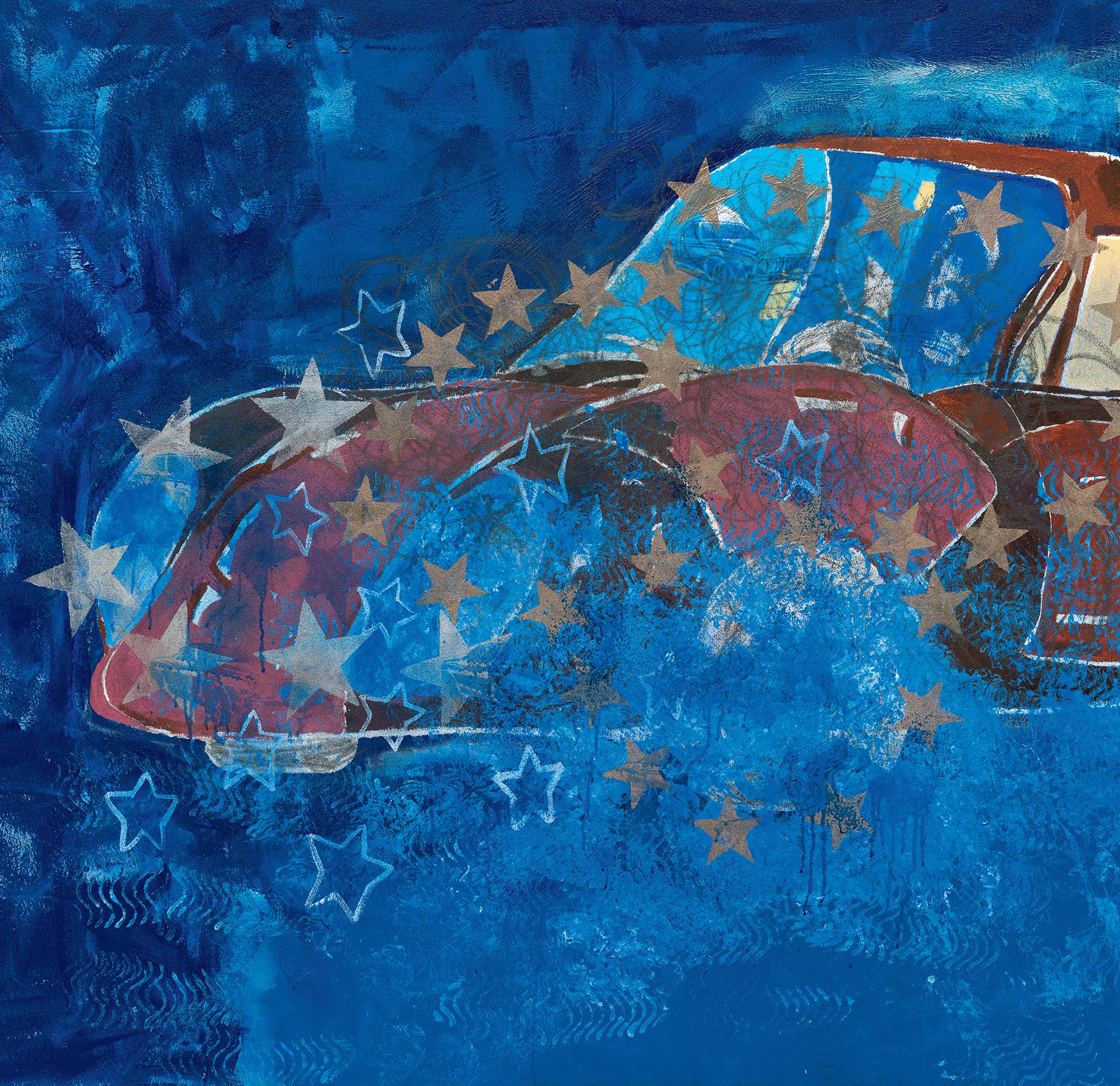














I am writing this letter two weeks before the election, and you will be reading it two weeks after. I don’t know what will take place within that time, and election aside, we all carry layers of uncertainty as we confront the daily realities of a fractured political system, war, genocide, diminishing reproductive rights, and climate catastrophe. Against this backdrop, trying to engage in joy can feel a bit naïve: How can we be joyful when our world is falling apart?
This fall, several Club Carla members met me in an alley, the first stop on a gallery hop of West Side alternative art spaces. Each of them was curious and engaged as we explored unconventional garages and side streets. A few people who had never met before carpooled to the next stop; others rode e-bikes in a tiny peloton for two. Smiles abounded, friendships formed. The e-bikers picked up potted flowers at some point, strapping them to the back of their bikes. Looking around, the word that came to me was joy.
It’s not always the first word that we think of when considering the art world—or more particularly, surviving in the art world. Words at the other end of the emotional spectrum more commonly crop up: competition, scarcity, exclusivity. Yet, seeking communal joy may in fact be a radical path forward.
On a blog post written amidst the pandemic and racial justice uprisings, writer and activist adrienne maree brown writes about attempting
to take sabbatical amidst the unrest, recalling how “many days felt like trying to meditate with a raging army at the door.” They responded to defeat by turning to the smaller scale of their own life: “i am learning how to return to happiness even when walking with grief, rage and overwhelm.”1
Throughout this issue, we see stories of artists who address themes of criminalization, displacement, and xenophobia by seeking joy and mutual support. Molly Larkey’s interview with Ceradon gallerists Andra Nadirshah and Stevie Soares focuses on their goal of creating a space to uplift trans artists. “The gallery is an invitation and a necessary call to action, for ourselves individually and as a community,” Soares says. Keith J. Varadi writes about the recent resurgence of alternative and artist-run spaces in our city, guided by individuals who combat the capitalist myth of scarcity by prioritizing community. A photo essay by Brandon Tauszik highlights security guard Michael Oxley of Hauser & Wirth, who looks closely at art, joyfully sharing his findings with visitors. brown writes that they “cultivate mutual happiness by sharing it when it seems to be in limited supply.”2
I love this notion of joy-seeking as a communal act. Club Carla is teaching me about the power of community, the necessary vulnerability of asking for support, and the magic that happens when others answer that call. Thank you to our members for your joy.
I am honored to show up for all of you as well, to joyfully continue this work as a community.
Lindsay Preston Zappas Founder & Editor-in-Chief
1.adrienne maree brown, “returning from away: wow,” June 8, 2020. https://adriennemareebrown. net/2020/06/08/returning-2/.
2. brown,“returning from away: wow.”
Harmony Holiday’s Black Backstage
Shameekia Shantel Johnson
Recent Rise of
Keith J. Varadi
Jordan Strafer at the Hammer Museum
—Laura Brown
Keith Mayerson at Karma —Alexander Schneider
Robert Andy Coombs at ONE Archives at the USC Libraries
—Philip Anderson
Tamara Cedré at the California Museum of Photography —April Baca
Dogs & Dads at Diane Rosenstein —Aaron Boehmer
(L.A. in São Paulo)
Catherine Opie at Museu de Arte de São Paulo
—Mateus Nunes
Photography
Your favorite art magazine is now a nonprofit!
Carla
is on a mission to change
whose artwork gets written about, who gets to write about it, and who that writing reaches.
Founded in 2015, Carla is a print magazine and online platform dedicated to critical, thoughtful, and far-reaching perspectives on contemporary art. Now approaching our tenth year, Carla has become an essential voice within the Los Angeles arts community, creating a robust archive of our city’s creative practices that has featured 1,700+ artists, 370+ art spaces, and 150+ local writers.
As outlets for art writing continue to dwindle, Carla offers a bold definition of criticism: writing that is communityfocused, spirited, and in constant evolution. Carla’s editorial team supports emerging and diverse art writers through competitive wages and an engaged editorial process. Our exhibition reviews, interviews, and essays are accessible and grounded, offering entry points into L.A.’s dynamic art world.




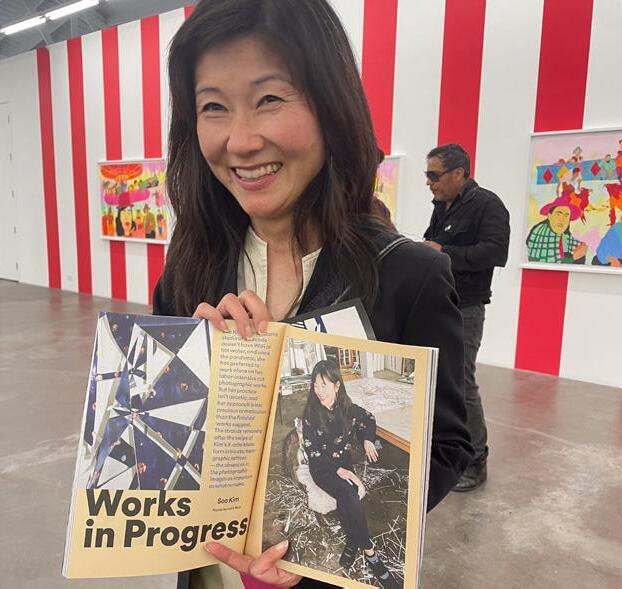



Support our work by becoming a Club Carla member today!
Thank you to our 2024 Club members!
Carla is free, grassroots, and artist-led. Club Carla members keep it that way. Club Carla is a joyful community of artcurious individuals who join us in taking conversations off the page and into artist studios, galleries, and beyond.
We have an exciting season of membership events, including a studio visit with artist Trulee Hall, a Frieze-week launch party, and a gallery hop to alternative art spaces on the East Side. Come explore the L.A. art world with us!

Join Club Carla now! join.contemporaryartreview.la

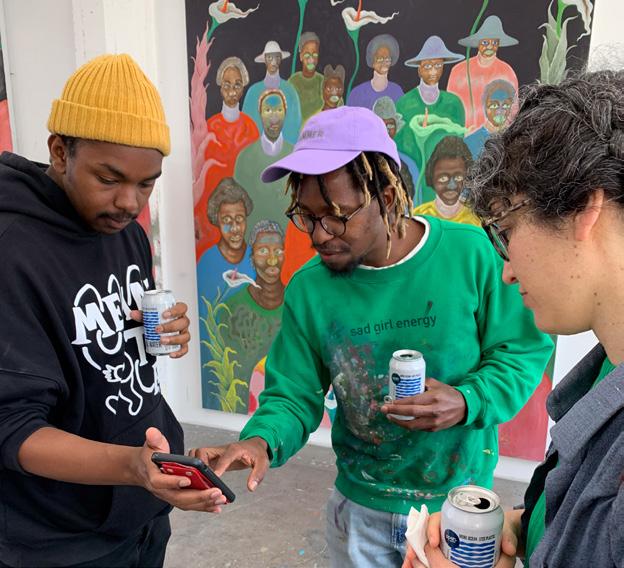


Contemporary Art Review Los Angeles is a quarterly magazine, online art journal, and podcast committed to being an active source of critical dialogue in and around Los Angeles’ art community. Carla acts as a centralized space for art writing that is bold, honest, approachable, and focused on the here and now.
Editor-in-Chief & Executive Director
Lindsay Preston Zappas
Managing Editor Erin F. O’Leary
Contributing Editor Allison Noelle Conner
Graphic Designer Satoru Nihei
Copy Editor Rachel Paprocki
Administrative Assistant Aaron Boehmer
Color Separations Echelon, Los Angeles
Printer Solisco
Printed in Canada
Submissions
For submission guidelines, please visit contemporaryartreview.la/submissions.
Inquiries
For general inquiries, contact office@contemporaryartreview.la.
Advertising For ad inquiries and rates, contact ads@contemporaryartreview.la.
Copyright All content © the writers and Contemporary Art Review Los Angeles.
Social Media Instagram: @contemporaryartreview.la
Cover Image
Creighton Baxter, The Lovers (detail) (2021). Digital prints on mesh with thread, 40 × 39 inches. Image courtesy of the artist. Photo: Miller Robinson.
Contributors
Lindsay Preston Zappas is an L.A.-based artist, writer, and the founder of Carla. She is an arts correspondent for KCRW. She received her MFA from Cranbrook Academy of Art and attended Skowhegan School of Painting and Sculpture in 2013. Recent solo exhibitions include those at the Buffalo Institute for Contemporary Art (Buffalo, NY), OCHI (Los Angeles), and City Limits (Oakland).
Erin F. O’Leary is a writer, editor, and photographer from the Midwest and raised in Maine. A graduate of Bard College, she has lived in Los Angeles since 2018, where she writes about photography and image culture. Her work has appeared in Carla and Photograph, among other publications.
Allison Noelle Conner is an arts and culture writer based in Los Angeles.
Satoru Nihei is a graphic designer.
Rachel Paprocki is a writer, editor, and student of library science who lives and bikes in Los Angeles.
Aaron Boehmer is a writer and photographer from Texas. He is interested in writing and research related to the intersection between politics and art and has written for publications such as The Nation, The Drift, and Texas Monthly
Board of Directors
Lindsay Preston Zappas, Executive Director
Melissa Lo, Board Chair
MJ Brown
Trulee Hall
Membership
Carla is a free, grassroots, and artist-led publication. Club Carla members help us keep it that way. Become a member to support our work and gain access to special events and programming across Los Angeles.
Carla is a registered 501(c)(3) nonprofit organization; all donations are tax-deductible. To learn more, visit join.contemporaryartreview.la.
Thank you to all of our Club Carla members for supporting our work. A special thank you to our La Brea and Western members: Anjelica Triola, Anthony Cran, Chad Karty, Charles James, Heather Mingst, Ian Stanton, Jennifer Michaela Byrne, Michael Zappas, Philippe Browning, Raskin Foundation, Sarah Ippolito, Solid Art Services, Tiffiny Lendrum.
Los Angeles Distribution
Central
301 PE
Anat Ebgi (La Cienega)
Anat Ebgi (Wilshire)
Arcana Books
Artbook @ Hauser & Wirth
as-is.la
Babst Gallery
Baert Gallery
Bel Ami
Billis Williams Gallery
BLUM
Canary Test
Charlie James Gallery
Château Shatto
Chris Sharp Gallery
Cirrus Gallery
Clay ca
Commonwealth and Council
Craft Contemporary
D2 Art (Inglewood)
D2 Art (Westwood)
David Kordansky Gallery
David Zwirner
Diane Rosenstein
dublab
FOYER–LA
François Ghebaly
Gana Art Los Angeles
GAVLAK
Giovanni’s Room
Hannah Hoffman Gallery
Harkawik
Harper’s Gallery
Hashimoto Contemporary
Heavy Manners Library
Helen J Gallery
Human Resources
ICA LA
JOAN
KARMA
LACA
Lisson Gallery
Los Angeles Municipal Art Gallery
Louis Stern Fine Arts
Lowell Ryan Projects
Luis De Jesus Los Angeles
M+B
MAK Center for Art and Architecture
Make Room
Matter Studio Gallery
Matthew Brown Los Angeles
Michael Werner Gallery
MOCA Grand Avenue
Monte Vista Projects
Morán Morán
Moskowitz Bayse
Murmurs
Nazarian / Curcio
Night Gallery
Nonaka-Hill
NOON Projects
O-Town House
OCHI
One Trick Pony
Pace
Paradise Framing
Park View / Paul Soto
Patricia Sweetow Gallery
Regen Projects
Reparations Club
REDCAT (Roy and Edna Disney CalArts Theater)
Roberts Projects
Royale Projects
Sean Kelly
Sebastian Gladstone
7811 Gallery
Shoshana Wayne Gallery
SHRINE
Smart Objects
SOLDES
Sprüth Magers
Steve Turner
Stroll Garden
Tanya Bonakdar Gallery
The Box
The Fulcrum
The Hole
The Landing
The Poetic Research Bureau
The Wende Museum
Thinkspace Projects
Tierra del Sol Gallery
Tiger Strikes Asteroid
Tomorrow Today
TORUS
Track 16
Tyler Park Presents
USC Fisher Museum of Art
UTA Artist Space
Various Small Fires
Village Well Books & Coffee
Webber
Wönzimer
East
BOZOMAG
Feminist Center for Creative Work
Gattopardo
GGLA
Junior High
la BEAST gallery
Lauren Powell Projects
Marta
Nicodim Gallery
OXY ARTS
Parrasch Heijnen Gallery
Philip Martin Gallery
Rusha & Co.
Sea View
South Gate Museum and Art Gallery
Sow & Tailor
The Armory Center for the Arts
Umico Printing and Framing
Vielmetter Los Angeles
Vincent Price Art Museum
Wilding Cran Gallery
North
albertz benda
ArtCenter College of Design
ArtCenter College of Design, Graduate Art Complex
STARS
The Aster LA
The Pit Los Angeles
South
Angels Gate Cultural Center
Long Beach City College
Space Ten
The Den
Torrance Art Museum
West
18th Steet Arts
Beyond Baroque Literary Arts Center
Dorado 806 Projects
Five Car Garage
L.A. Louver
Laband Art Gallery at LMU
Marshall Gallery
ROSEGALLERY
Von Lintel
Zodiac Pictures
Outside L.A.
Art & Bodega (Claremont, CA)
Bread & Salt (San Diego, CA)
Bortolami Gallery (New York, NY)
Buffalo Institute for Contemporary Art (Buffalo, NY)
Chess Club (Portland, OR)
DOCUMENT (Chicago, IL)
Et al. (San Francisco, CA)
Fresno City College (Fresno, CA)
Left Field (Los Osos, CA)
Level of Service Not Required (La Jolla, CA)
Los Angeles Valley College (Valley Glen, CA)
Mandeville Art Gallery, UC San Diego (San Diego, CA)
Mrs. (Queens, NY)
Museum of Contemporary Art San Diego (La Jolla, CA)
OCHI (Ketchum, ID)
Oolong Gallery (Encinitas, CA)
Pitzer College Art Galleries (Claremont, CA)
Libraries/Collections
Baltimore Museum of Art (Baltimore, MD)
Bard College, CCS Library (Annandale-on-Hudson, NY)
Charlotte Street Foundation (Kansas City, MO)
Cranbrook Academy of Art (Bloomfield Hills, MI)
Getty Research Institute (Los Angeles, CA)
Los Angeles Contemporary Archive (Los Angeles, CA)
Los Angeles County Museum of Art (Los Angeles, CA)
Maryland Institute College of Art (Baltimore, MD)
Midway Contemporary Art (Minneapolis, MN)
Museum of Contemporary Art (Los Angeles, CA)
NYS College of Ceramics at Alfred University (Alfred, NY)
Pepperdine University (Malibu, CA)
San Francisco Museum of Modern Art (San Francisco, CA)
School of the Art Institute of Chicago (Chicago, IL)
The Metropolitan Museum of Art (New York, NY)
University of California Irvine, Langston IMCA (Irvine, CA)
University of Pennsylvania (Philadelphia, PA)
University of Washington (Seattle, WA)
Walker Art Center (Minneapolis, MN)
Whitney Museum of American Art (New York, NY)
Yale University Library (New Haven, CT)

Scan to access a map of Carla’s L.A. distribution locations.

In her 2020 essay for Triple Canopy, “The Black Catatonic Scream,” multidisciplinary Los Angeles-based artist Harmony Holiday reframes the polarities of emotion as something more elastic. “Black music is a bridge between elective muteness and the scream, between excess and disguise,” she writes. She marks how, emerging from the Middle Passage, captive Africans used sound to communicate despite the language barrier among the different tribes: “On the passage…we encounter low hummed sounds, hysterical sounds, requiem sounds, healing sounds, masochistic sounds, unsounds, murmurs, and, in dire conditions, we refuse all sound.” Holiday notes the importance of silence in this hellish landscape: It provided a break in psychosis and a means of refuge. “We need silence to redirect meaning,” she explains.
“To escape the sad, rabid demographics of struggle and criminalization and running away to seek a Mecca offstage, backstage, elsewhere.”1
This silence is a framework for the “Black backstage,” a term that Holiday uses to describe the psychological space where Black performers go to engage in silence—a space where, through seclusion, they are empowered to role-play, live out fantasies, or embrace their private interior worlds.2 Holiday often places her own practice (of writing, archiving, and experimental filmmaking) within this framework by taking us on her journey through the interior world of each person she studies. This approach also structured her exhibition, BLACK BACKSTAGE (2024), recently on view
at The Kitchen’s Westbeth location in New York City. The immersive exhibition offered intimate portrayals of Black musicians throughout time—a study in how their public and private lives became vulnerable to spectacle, and how a withdrawal from the limelight ultimately altered their public-facing personas. Harmony captured musicians’ meanders between quietude and hysteria in an effort to safeguard their interior worlds. Her culturally dense installations were spiritually charged, fusing factual narrative with mythology. By repositioning the notion of celebrity to privilege humanity, she wields graceful and complex portraits of Black musicians to absolve them of one-dimensionality. Across her practice, Holiday mobilizes the Black backstage to repurpose the biographies of her muses, allowing them to retreat and to (re)claim sanctity.
Entering BLACK BACKSTAGE at The Kitchen’s lofty temporary outpost felt like I was gearing up to interview a star in her green room. The exhibition comprised various installations, each imbued with the behind-the-scenes ephemera of a performer. In the left corner was Life of the Party (all works 2024), an onyx Hollywood vanity set suited for any starlet’s boudoir. On its surface was a 1960 issue of Jazz Quarterly, which sat just inches away from a floral rhinestone clutch, a trail of incense ash fallen to the wayside of its holder, a cool hot comb, a thick binder filled with printed articles on Black musicians, and a vintage Sony TV-720U that played a silent video of Black performers. A picture of D’Angelo and Grace Jones, staring at one another in equal admiration, was plastered on the mirror. Together, this assemblage of memorabilia and personal accoutrements act as a portrait of a musician just moments away from performing. Viewers could sit at the vanity and look at themselves under the warm lights while paging through print-outs of Margo Jefferson’s essay “Ripping off Black Music” (1973), Miles Davis’ last major interview with SPIN magazine, or John Edgar
Wideman’s essay “The Silence of Thelonious Monk” (1999). The installation’s elements gathered a sense of the complex history of Black music, exemplifying the level of grace and beauty required for its creation.
At the right of the room was Industry Plant (2024), an onyx-toned stage that took the form of a low half-moon table. Its face was littered with archival tabloid and editorial articles on Black musicians featured in Jazz Journal and Downbeat and a pair of black over-the-ear headphones. Other musical paraphernalia—a retro wireless microphone and a mini speaker—accompanied a spread of cotton bolls that formed a half circle on the floor, connecting with the table to complete a circle. The work felt like a shrine to Black cultural production, hosting a séance that unearthed the histories of labor that intersect with notions of celebrity and authenticity. As cotton bolls outline our recent relationship to African enslavement in America, Industry Plant threads a line between the creation of the blues and the tolls of Black labor that developed the genre and the country alike. At the heart of the room was a supple, white leather Le Corbusier Grand Modele sofa placed in front of Holiday’s 37-minute video Abide With Me, which ran on a loop. The video was a work of fabulation, for which the artist stitched together found archival footage of Black performers to reimagine the three years of Thelonious Monk's life when he went off the grid and waylaid his nascent musical career to tour with an evangelist before signing with a record label. It largely features archival footage of Monk himself and clips of musicians performing: Videos of North West performing live in Paris—sourced from TikTok—intermix with footage of Eric Dolphy playing a hymnal. These visuals are overlaid with the voice of cultural theorist Fred Moten, who reads an essay by Holiday. Each element merges to create a layered score. As the video shifts between full-color and monochrome,
red light beams from behind the screen, spilling over the edges. The video aims to reconstruct Monk’s interior disposition in his time away from the public eye. The collaged footage evidences Monk’s spiritual transformation through the lens of other musicians, nodding to the transcendence that came from his retreat.
Suspended from the ceiling throughout the exhibition space was Runners, a series of double-sided screen-prints on cotton. On each of the four prints, Holiday layered images and poems to reimagine the lives of Black performers, including Billie Holiday, J Dilla, Billy Strayhorn, Sam Cooke, D’Angelo, Ye, and Michael Jackson. The pieces work to restore a humanity often stripped in media outlets by showing a fuller scope of each individual, tapping into backstage spaces where performers create new identities to protect themselves. In one print, Holiday overlays an image of Ye that warps distinguishable features, blurring his face and aspects of his body. On the opposite side of the panel, a collage of screenshots stitches together a news article from the fictional Dail Ye News. The article includes screenshots of real quotes in which Ye praises Michael Jackson, who he says inspired him to be larger than life—to be free. By quoting Ye, the artwork advocates for his humanity while manifesting the Black backstage to create a speculative space in which the artist can freely explore his inner world.
The notion of Holiday’s Black backstage is a perennial reference point in Black studies. Ideas of quietude and interiority came into theoretical consciousness through the likes of Kevin Quashie and Elizabeth Alexander, whose scholarship highlights the scope of Black people’s emotional composition, ranging from shyly reserved to extroverted bravado.3 Holiday’s writings refine this rhetoric, giving language to how musicians use quietude and

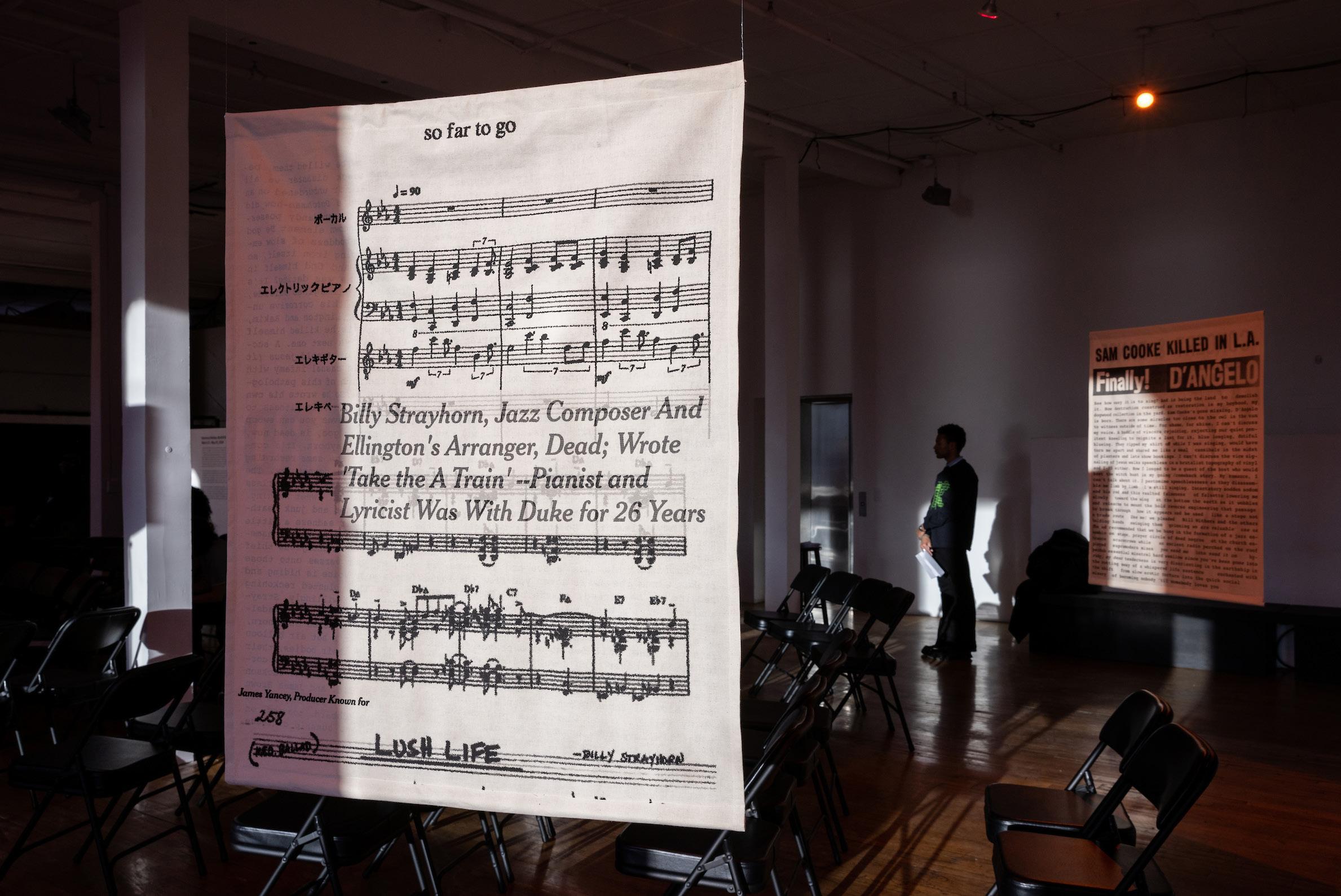


interiority to safeguard their private lives against public intrusion.
In Holiday’s Substack, Black Music and Black Muses, which she began publishing in early 2021, she speaks to Black mythologies at her own pace, outside of the exhibition space. There, she fulfills the role of a melodic archivist and caretaker, where essays on her musical muses double as cultural anthropology and autofiction, similar to works like Margo Jefferson’s Negroland (2015). Equally, the newsletter becomes a platform for her to perform as she entangles herself with Black music that she loves deeply. Black Music and Black Muses gets its name from the late Amiri Baraka’s Black Music (1967), a collection of groundbreaking essays on modern jazz and Black icons, including Cecil Taylor, Sonny Rollins, and Wayne Shorter. Working in the vein of Baraka, Holiday takes a grassroots approach to cultural criticism by recontextualizing Black music, stating, “I have felt that people have been sort of lukewarm about doing real, on the ground, in it, music writing since Baraka’s Blues People and Digging. A lot of that work since then has gone into academia, the closest thing is probably Fred [Moten’s]
In the Break.”4 Through Black Music and Black Muses, Holiday embraces the tenacity of writers who have skillfully analyzed the blues tradition: She inherits Baraka’s quick-witted bravado, Moten’s suave doublespeak, and writer Greg Tate’s earthbound cadence that uses cultural slang as standard grammar.
Her lines hit you like a jab to the face and can be used as salve once the bruise appears: “Maybe love and peace are their own propaganda and all of us are secretly out for blood but one consequence of unrepentant genocide is that from its clutches, you’ll never catch the delighted fantasy hidden between your justifications for hatred and eventually, uninterrupted, there will be no one left to hate but yourselves,” she writes.5 Her honesty and wisdom become lyrics that strike
a chord before an internal resolve of the reader is met. Occasionally, she mixes her writings with screenshots from social media platforms like TikTok or interview clips from YouTube, riffing on the online memeification of Black aesthetics, which can be read as its own kind of spectacle, depending on how the material is used. Ultimately, Holiday creates an air of familiarity through navigating the contours of her muses. Through her delivery method, they become approachable people rather than idolized figures.
Holiday captivates her readers by connecting the threads between her biography and the lineages that precede her existence. Beyond her devotion to writing outside the thresholds of academia, Holiday’s appreciation for music blossomed through her father, the late musician Jimmy Holiday. Mr. Holiday, a singer-songwriter with two albums under his belt, spent most of his life struggling to find consistent and lucrative success in the music industry. In one essay, Harmony tells the story of Mr. Holiday showing up at Ray Charles Enterprises unannounced with two briefcases: one filled with demos and the other with revolvers. He refused to leave until they heard his music.6 (He would go on to co-write Charles’ “All I Ever Need Is You” and Jackie DeShannon’s “Put a Little Love in Your Heart.”)7 Holiday’s father’s life trickles into her meditations on Black performers whose radical essence and mental illness sway between public and private life. Mr. Holiday struggled with bouts of paranoia, worsened by his prescribed daily dose of the controversial antipsychotic Thorazine. At a young age, Harmony recalls seeing him threaten people with guns, including her mother. Holiday grapples specifically with guns as a dual symbol of danger and freedom, a notion that calls back to the full scope of Black interiority. “I understand why my father carried those weapons with him,” she writes. “There’s a majestic intentionality within the idiosyncrasies and hypervigilance that others called his madness…And it’s equally mind-numbing to be made
a vessel for propaganda about the trappings of blackness, the redundant spectacle of lost men and traumatized daughters.”8 In contrast to his bombast, Harmony paints more peaceful memories of her father, in the quiet of their home where he practiced his music.9 In a sense, Holiday memorializes her father through BLACK BACKSTAGE by building complexity and context around the public narratives of hypervisible musicians. She critiques the relentless appetite of media, especially as it mirrors the plantation system’s cycles of surveillance, punishment, and ridicule.
Across her practice, Holiday depicts an interior space where hushed tones and screams collide into a glitchy index of the Black aesthetics. Holiday’s concept of the Black backstage redirects the oppressive confines of celebrity. To be backstage is to be hidden from the public eye, to allow the public persona to fall away. Through this framework, musicians who resist legibility and public approval inherit instead the frantic and tranquil sounds that transform music into a manifesto. The clarity of the Black backstage is available to all of us: Retreat offers us an opportunity to be beholden to only ourselves —to our inner worlds, to our fantasies.
Shameekia Shantel Johnson is a writer, curator, and researcher of Afro-Caribbean descent from New York City. Currently, Johnson is perfecting her nomenclature Red Notes, a body of work that meditates upon the color’s psycho-spiritual relationship to black being and how it conceptualizes in social space.
1. Harmony Holiday, “The Black Catatonic Scream,” Triple Canopy, August 20, 2020, https://canopycanopycanopy. com/contents/the-black-catatonic-scream.
2. Harmony Holiday, “Abide With Me,” Black Music and Black Muses, September 11, 2023, https://harmonyholiday. substack.com/p/abide-with-me.
3. See, for instance: Kevin Everod Quashie, “The Trouble with Publicness: Toward a Theory of Black Quiet,” African American Review vol. 43, no. 2/3 (2009), 329–43; Elizabeth Alexander, The Black Interior (Minneapolis: Graywolf Press), 2004.
4. Amira Olingou, “Harmony Holiday in conversation with Amira Olingou,” November, vol. 8, accessed October 15, 2024, https://www.novembermag.com/content/ harmony-holiday.
5. Harmony Holiday, “Love’s in Need of Love Today,” Black Music and Black Muses, October 20, 2023, https://harmonyholiday.substack.com/p/loves-inneed-of- love-today.
6. Harmony Holiday, “Love Is War for Miles,” Triple Canopy, December 22, 2023, https:// canopycanopycanopy.com/contents/love-is-warfor-miles.
7. Ray Charles, “All I Ever Need Is You,” written by Jimmy Holiday and Eddie Reeves, October 1971; Jackie DeShannon, “Put a Little Love in Your Heart,” written by Jackie DeShannon, Randy Myers, and Jimmy Holiday, June 1969.
8. Holiday, “Love Is War for Miles.”
9. Harmony Holiday, “Midnight Girl/Would you like to love me,” Black Music and Black Muses, April 28, 2021, https:// harmonyholiday.substack.com/p/midnight-girlwouldyou-like-to-love.


I moved to Los Angeles from New York City almost exactly eleven years ago and was instantly taken by the city—the way the sun would naturally wake me up every morning; the daytime backyard barbeques; the evenings spent sipping on martinis in storied haunts like Dan Tana’s, Musso & Frank Grill, and Taix French Restaurant. There were art galleries located in strip malls, peculiar domestic spaces, and funky garages (Freedman Fitzpatrick, metro pcs, Park View, Chin’s Push, Paradise Garage, Reserve Ames, and Five Car Garage). There were lax and unpredictable spaces (356 Mission, Public Fiction, and the Poetic Research Bureau).
And then, of course, there were the unique institutions that felt so specific to this place (the MAK Center for Art and Architecture, LAXART, Los Angeles Contemporary Exhibitions [LACE], and Fahrenheit by FLAX).1 This sprawling metropolis seemed full of life and new possibilities. During my first few years in L.A., the city’s art world was buzzing with energy and brimming with excitement. Openings, parties, and events felt genuinely fun. Eventually, my eyes were opened to the gnarlier side of the art world: There was a subset of collectors known for buying up the work of young artists at low costs and then flipping it on the secondary market for absurd prices.2 Other powerful individuals whose collections were once desirable landing spots for young artists’ work began to be boycotted for their political stances and actions.3 And rumors were circulating about advisors who were involved in shady-to-illegal
business practices, some of whom were later exposed.4
Until recently, I took a bit of a hiatus from the art world—I had become exhausted by the general precarity of (and lack of support for) our L.A. artist populace. The loose, lighthearted nature of an art fair like Paramount Ranch had been replaced by more buttoned-up business at Frieze, which seemed to signal a shift in priorities. The election of Donald Trump brought an extra level of precarity to L.A.’s creative circles. The Covid-19 pandemic slowed down much of the previous momentum built by artists and galleries of every social class.5 It became difficult for me to focus on what was happening at galleries and museums when the news cycle was filled with stories of sexual assault, the murder of people of color, the bombing of foreign countries, the worsening treatment of our unhoused community, and so on. Cultures have been clashing and systems have been crashing at all-new rates; it should be no secret that the United States has long set people up to fail, but the years immediately preceding and following 2020 really opened some people’s eyes to this fact.
By 2023, though, I truly began to miss my extensive community and my exuberant consumption of art, and I slowly began reintegrating myself into the world. When someone offered me an affordable MacArthur Park space to start a gallery, it felt like a sign. I’ve been operating my artist-run space, Gene’s Dispensary, for about half a year now, but for another year or two leading up to it, I had become increasingly aware of new alternative spaces that had been sprouting up around town. This city in particular has a long history of these sorts of projects spanning many decades, and I wanted to reach out to some of the folks involved with this current grouping to get perspective on this moment that is starting to feel so much like the one I fondly remember upon arriving to L.A. more than a decade ago.
Keith J. Varadi
Somehow, L.A.’s art world feels more vibrant, more alive than it has in quite some time—despite the exponentially skyrocketing cost of living and aggressively oppressive actions of local police, politicians, and real-estate developers. For a few years there, it felt like the cultural nitty-gritty of the city was going to be exterminated by outof-town blue-chip galleries and $10 beers, but there are plenty of crafty and resourceful minds developing new blueprints for engaging in the art world, defining success on their own terms. Lately, there has been a serious surge of gallery spaces —a group of newly inspired creatives determined to do things their way—operating outside of and beyond more conventional means. There are once again strip mall spaces: The Fulcrum and Leroy’s. Domestic spaces have been popping up all over the city: Gaylord Fine Arts, Quarters Gallery, Bozomag, Ceradon Gallery, The Hermitage, and 839, for example. There are numerous spaces, such as 2220 Arts + Archives and DMV (Departure from Music Venues), that offer up a full scope of programming, from music shows to poetry readings to film screenings. Central Server Works, like The Fulcrum, publishes books in addition to organizing exhibitions. Timeshare has functioned like a well-oiled co-op machine, while Soldes has added a bit of a fun, elusive mystery to the city’s scene.
In early 2023, artist and designer Nina Muccia started displaying artworks in the laundry room of her two-bedroom Los Feliz duplex under the moniker Quarters Gallery, creating a cozy and cockeyed place to experience art. When I reached out to ask her about her decision to start the galley, she described her position within the lineage of similar spaces as somewhat nebulous. “Most of what I know about the tradition of DIY [culture] in L.A. is through oral history and gossip, since these projects often go under-documented, and are transitory by nature,” she explained, adding that alternative spaces can only be alternative for so long before they eventually either grow or fade.
Often, the (inevitable) evaporation is due to one of a few reasons: the burnout that comes from pursuing a less commercially driven endeavor, the preferred pursuit of one’s individual goals or aspirations, or simply the rising rent in a continuously gentrifying city. Creative options to physical gallery spaces are key to the survival of small spaces such as Leroy’s. Ian James, who founded Leroy’s in 2018, told me that when he was offered a unique readymade space in the form of a former Cambodian Vietnamese restaurant in the Chinatown building that once housed metro pcs (co-founded by James and fellow artist Matt Siegle), he landed on the name Leroy’s as a nod to the joint’s longtime owner, who he had befriended over the years from living and working upstairs. Initially, he speculated that he would eventually get the boot so that some well-funded niche restaurant could take over, as the gentrification in Chinatown has been led, in part, by its dining scene. To his amazement, no developers, law enforcement, or local city officials have bothered him, and he’s been able to program at his own pace and to his own preferences for years now.
Flexibility of space is also paramount for Gaylord Fine Arts, a gallery that the couple John Tuite and Joseph Geagan run out of an apartment in the historic Gaylord Apartments in Koreatown. Tuite shared that he feels very fortunate to have support from the people who own and manage the building, which allows him and Geagan to provide a platform and a place to hang out with friends—artists, writers, musicians, and performers (all those who are vital to the lifeblood of a city’s ecosystem, but who often seem to be considered expendable by developers who push a luxury high-rise lifestyle). This anxiety about displacement and/or disappearance was echoed by most of the galleries I talked to and is shared among almost all of my artist friends.
Joshua and Rachael Oduga, who operate Central Server Works, suggested that this current moment is “a reflection of the growing desire


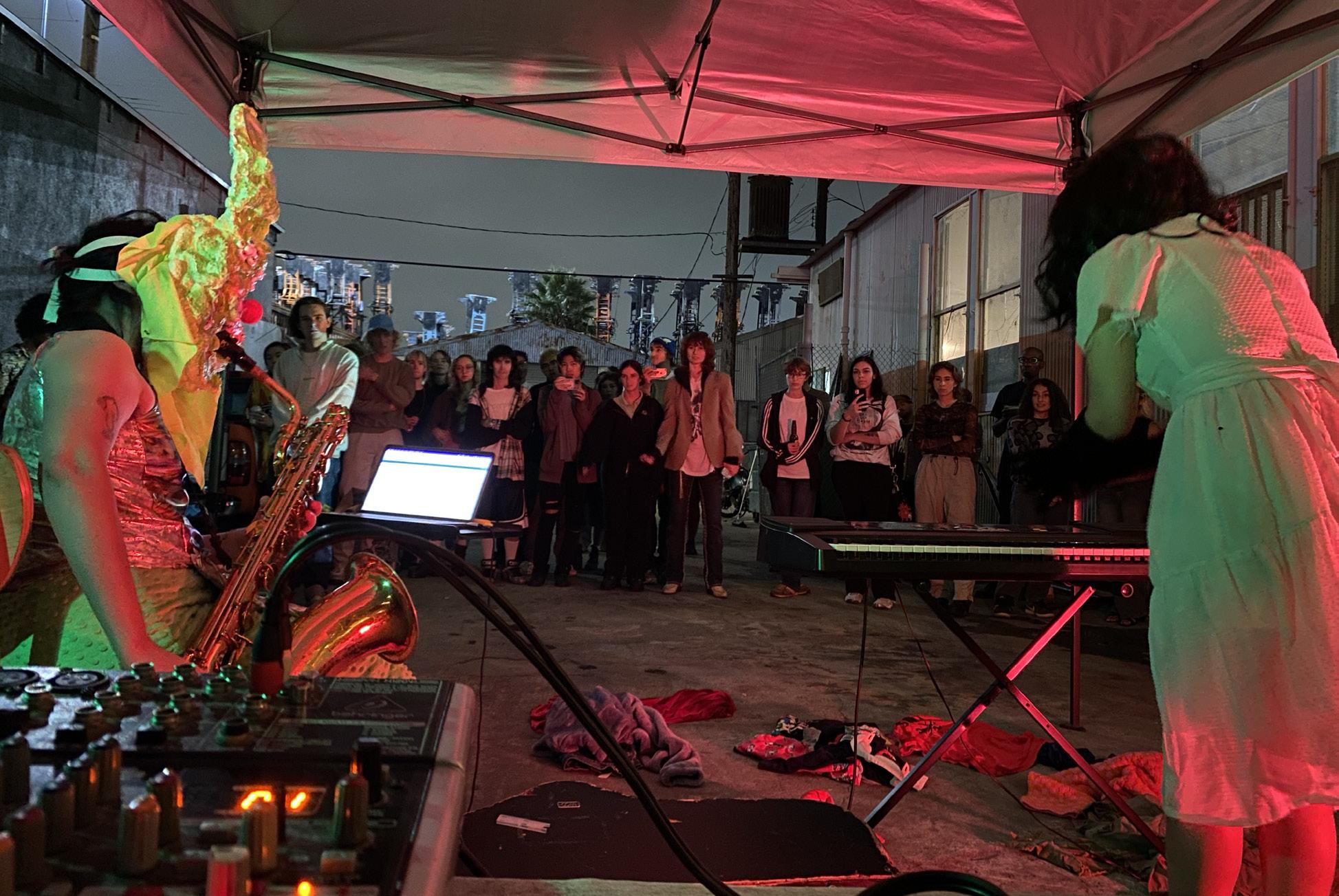
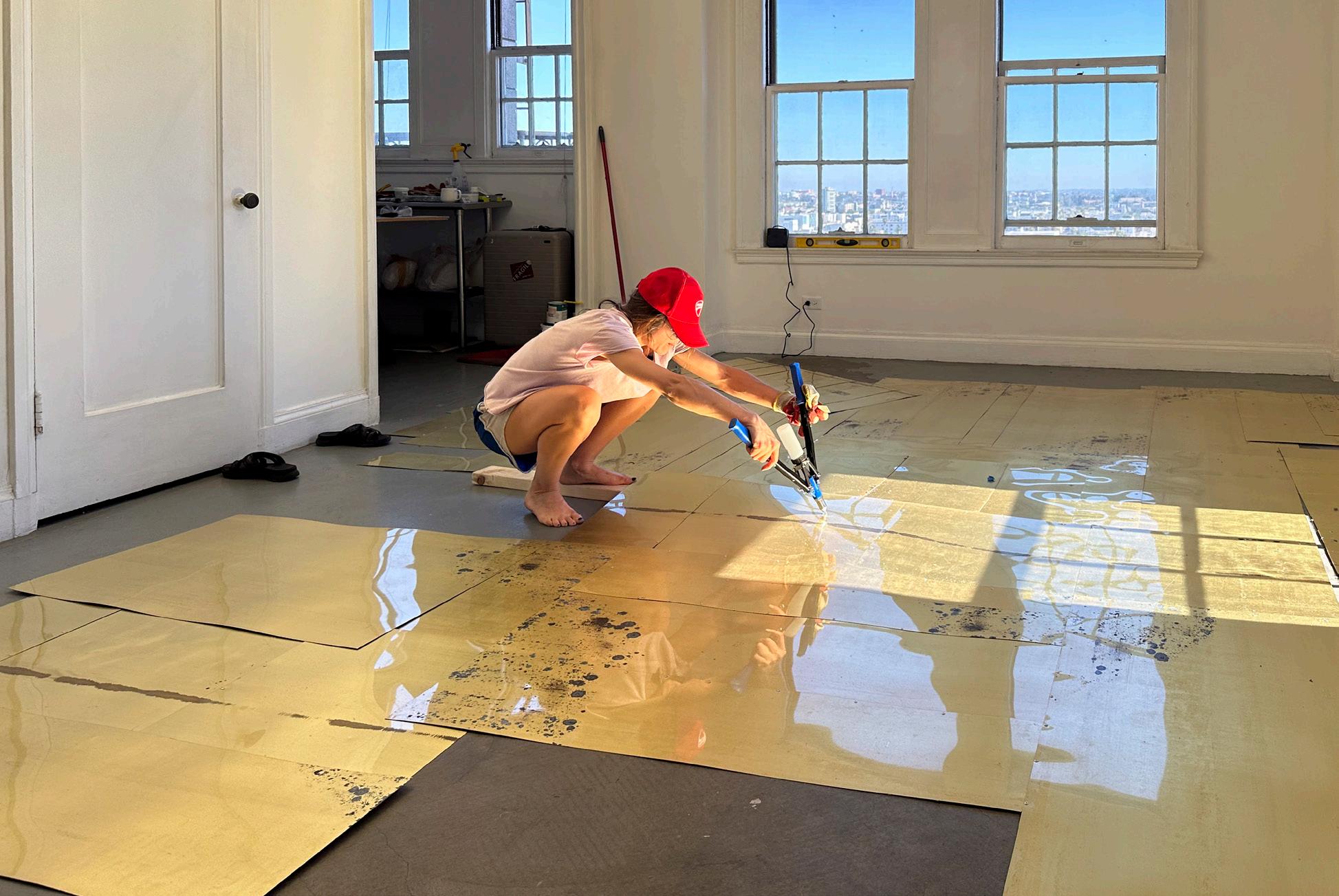
among artists to take control of their narratives and create platforms that reflect their unique visions.” Joshua told me, “I believe this trend is sustainable, as long as there is a continued emphasis on community, collaboration, and adaptability.” It strikes me that this new assortment of DIY gallerists are all progressive pragmatists. They have an admirable amount of idealism that is balanced by realism, creating new models, new systems, and new outlooks while acknowledging that change takes time and the resources necessary to nourish conceived projects are often limited.
The six artists behind the Lincoln Heights gallery Timeshare embody this ethos of community focus, despite being well aware of the precarity of artist-run projects. Founders Andy Bennett, Antonio Bever, Brandon Bandy, Colleen Hargaden, Ines Kivimaki, and Rachel Jackson contribute equally to the curatorial program and financial responsibility, focusing on concepts over profits. “We felt the desire to create a space to build community and conversations around work that was driven by ideas, as opposed to the market,” they told me over e-mail. By the time I spoke with the Timeshare founders, I had come to find that many of these gallerists had goals that were centered around community, conversation, collaboration, experimentation, and freedom. Money—making a profit, or even breaking even—while certainly not ignored, didn’t feel like a primary motivation.
Tuite told me that the Gaylord program is “very much driven by personal connections, fostering collaborations between friends and artists we admire,” and the openings do indeed feel very friendly and laid back, with music playing in the background and people smoking and drinking and chatting for hours. This is a vibe that Tuite says is very important to him and Geagan, who like to call the building “The Chelsea Hotel of L.A.,” adding that “it’s a very offbeat collection of tenants, [but] the building just has so much character, too.”
For James of Leroy’s, having a nighttime gallery that also functions as a cheap bar allows him to provide a space to congregate, get lubricated, and look at art without doing the standard 15-minute spin. Following his previous venture, metro pcs, in which James and co-founder Siegle lost money on every show, he wanted to figure out a different model. The bar makes the space cost-neutral and allows James to offer artist fees—uncommon for small project spaces—without any pressure to make sales. This more relaxed and approachable model keeps the focus on the art, the ideas, and the people—all of the reasons why so many of us went to art school and decided to adopt this life and lifestyle in the first place.
Timeshare noted that the myriad academic institutions in L.A. indeed play a role in the newly revitalized artistrun scene: Each school is connected to multiple generations of artists who are hungry for spaces to continue rigorous conversations after they leave campus. A prime example of such an artist is Dakota Higgins, who founded the ad hoc, cooperative experimental music space DMV in an active auto body shop in the industrial city of Commerce. Seeking new ways to release his creativity and connect with the city’s art community, Higgins started the project in 2022. It has become more actualized following his graduation from the MFA program at the University of California, Los Angeles this past spring, and he has been developing myriad plans for it to continue to grow and evolve. His point of view mirrored that of the Timeshare crew, proposing that the number of down-to-earth DIY spaces in L.A. has to do with the number of MFA programs in the region pumping out ambitious cohorts in a city whose commercial gallery scene can’t possibly support them.
Therefore, said Higgins, these young, recent graduates need to manufacture opportunities for themselves and their peers in order to have public-facing practices. After
mulling over Higgins’ position, I realized how noteworthy it is that so many millennial-and-younger Angelenos seem to be shunning the stark and staid white-wall traditions that have been propped up by and on globalist, neoliberal foundations in favor of more tangible connections in which peers elevate each other personally, professionally, and otherwise.
In a moment when every art publication seems to be covering the tumultuous state of the art market,5 L.A.’s alt galleries seem to be operating under totally different rules. While sustainability is a common theme among most of these new gallerists (and sustainability can essentially be equated to survival), they all seem to have artists and community at top of mind—as opposed to profits and reach, which are typically the primary concerns of traditional commercial galleries with high overheads and international influence.
Ultimately, many of these individuals are intentionally avoiding these market forces, instead seeking out actual joy, intellectual fulfillment, community, and connection. Jacob Lenc co-founded The Hermitage with Billy Frolov and Paloma Dooley —the three host exhibitions in unusual playhouse/shed-like spaces in two L.A. backyards. Lenc explained that they actively avoid getting involved with money, and instead, have each artist deal with any prospective sales directly. “Once money is involved, the spirit of what we are trying to do would be compromised. It would take the fun out of it,” he said, adding, “We have no interest in becoming art dealers.” And, while each of these alt spaces has different motivations and relationships to sales, it does appear that fun—which is often forgotten amid crises of capital—is inherent to the zeitgeist of this moment.
The sense of fear that this could all go away at any time—because it often does—still prevails, but there is also a generally accepted attitude that it doesn’t really matter. New paths
are always forged, new models and systems are always created, and new outlooks are always developed and shared. As it becomes increasingly clear that the established models within the art market aren’t serving most of us, the persistent sentiment among the folks I’ve spoken with has been: If it doesn’t exist already, let’s fucking make it for ourselves.
Keith J. Varadi is a Pittsburgh-born, Los Angeles-based artist, poet, critic, and curator who has been employed by multiple intelligence and investigations firms, mostly focusing on corporate due diligence. Previously, he was a researcher for the long-running television game show, Jeopardy!. He runs the gallery Gene’s Dispensary out of an old medical office building near MacArthur Park.
1. While several of the spaces listed here no longer exist, others are still around (MAK Center and Five Car Garage). Still, others have shifted their structure: metro pcs closed in 2016, but one of its founders, Ian James, now runs the space Leroy’s out of the same building. Park View has become Park View / Paul Soto; LAXART recently reopened its doors in a new location as The Brick.
2. Andrew M. Goldstein, “Cultural Entrepreneur Stefan Simchowitz on the Merits of Flipping, and Being a ‘Great Collector,’” Artspace, March 29, 2014, https://www. artspace.com/magazine/interviews_features/how_i_ collect/stefan_simchowitz_interview-52164.
3. Kate Brown, “25 Artists Have ‘Deauthored’ Their Works in the Zabludowicz Collection Because of Its Ties to the Israeli Military,” Artnet News, July 27, 2021, https://news. artnet.com/art-world-archives/zabludowicz-boycottdeauthor-1992711.
4. Daniel Cassady, “Following Bankruptcy Filing, Beleaguered Advisor Lisa Schiff to Sell Collection at Phillips,” ARTnews, September 16, 2024, https://www. artnews.com/art-news/news/bankruptcy-sale-philipslisa-schiff/.
5. Still, art sales were on fire during lockdown and shortly thereafter, causing many others to go on spending sprees. Some artists expanded their studios and galleries opened new spaces, growth that is now creating tension in our current pre-election market pinch. See, for instance: Zachary Small and Julia Halperin, “Young Artists Rode a $712 Million Boom. Then Came the Bust,” The New York Times, August 18, 2024, https://www.nytimes.com/ 2024/08/18/arts/design/young-artists-auctionscollectors.html.



The etymological history of the word “shibboleth,” understood today as an expression or pronunciation that “distinguishes people of one group or class from those of another,” traces back nearly 3,000 years.1 In the Hebrew Bible, the word shibbōleth refers, alternately, to currents of water and ears of grain.2 But in its most enduring usage, the original meaning of the word is inconsequential: In the story of the Ephraimites and the Gileadites, the word was employed in a pronunciation test for suspected members of an enemy tribe, whereby failure to utter the “sh” phoneme resulted in execution.3 “Shibboleth” therefore came to signify “a test in which a hard-to-falsify sign winnows identities and establishes and confirms borders.”4
Arguably the best-known work of contemporary art associated with the term is Doris Salcedo’s Shibboleth (2007), a 548-foot crack installed in the concrete floor of the Tate Modern in London. In some places, the crack was as thin as a hair, and elsewhere it widened into a gap of several inches. Salcedo’s Y-shaped crevice was meant to be read as a metaphor for exclusion. According to an artist statement published in the journal Signs, “the crack represents a history of racism, running parallel to the history of modernity; a standoff between rich
and poor, northern and southern hemispheres.”5 For some, though, the artwork’s metaphorical operations were notoriously vague and obscure,6 and the installation in turn became a test in its own right, separating those who pored over the exhibition materials in order to participate in the work’s discourse and those who, for various legitimate reasons, did not. Although Salcedo’s installation was diffuse in its meaning, the concepts of memory and power are vital and continue to complicate our understanding of belonging and erasure each time they rear their head in contemporary art.
In the 2024 Venice Biennale’s provocatively titled central exhibition, Foreigners Everywhere, a group of works stand out as present-day inheritors of—and apt rejoinders to— some of the conceptual questions raised by Salcedo’s influential installation. Themes of memory and exclusion echo across the massive, 332-person exhibition: namely, in the work of Joyce Joumaa, Sim Chi Yin, Beatriz Cortez, and Kang Seung Lee. While Salcedo’s Shibboleth linked a concrete entity (a crack) to an abstract phenomenon (exclusion), these artists link specific, tangible images and objects to equally concrete events involving people who have been othered within dominant historical narratives. Their resulting works pinpoint the crucial role that recollection plays in the enforcement —and blurring—of cultural boundaries. Such memory, if preserved, provides a wellspring of intergenerational wisdom to be wielded in the face of ongoing oppression and injustice.
Joumaa’s multimedia installation Memory Contours (2024) depicts reenactments of an obscure test administered at the historic immigration processing center in New York’s Ellis Island in the early 1900s: Before entering the country, new arrivals were tasked with memorizing and reproducing a series of geometric shapes by hand. The work, installed in the Giardini’s Central Pavilion, consists of a fourchannel video; still images displayed in lightboxes; and a soundscape
Jenny Wu
of ocean waves, birdsong, and human voices. In the videos, Joumaaa shows her hand and those of three collaborators drawing various shapes —rhombuses, hourglasses, concave pentagons. The shapes are recreations of four drawing tests featured as case studies in the 1915 U.S. Public Health Service report. These looping gestures play out on large vertical screens, filmed reenactments of the so-called “intelligence testing” that detailed immigrants’ intellectual “inferiority” and, by extension, their unsuitability for entry.7 In this case, the faculty of memory—specifically, that of rote visual recollection—was used to determine a person’s right to cross a geopolitical threshold.8 In the context of migration and assimilation, memory often functions as a delineator of cultural difference: What one remembers about a particular time and place marks them as an insider or a foreigner. Memory, however, is a slippery and problematic faculty. It can be co-opted, as Joumaa’s installation shows, to assess aptitude and justify exclusion.
Sim’s single-channel video Requiem (Internationale, Goodbye Malaya) (2017) from One Day We’ll Understand (2015–present), installed in the Arsenale’s Nucleo Contemporaneo as part of the roving group exhibition Disobedience Archive, 9 similarly homed in on how memory can be weaponized. In the video, elderly British Malayan veterans of the Anti-British National Liberation War were tasked with singing their movement’s anthem, the “Internationale.” The video’s subjects —a wide-eyed old woman with cropped hair, a liver-spotted old man in a rumpled suit, and others—struggle to recall the words to the socialist movement’s anthem, even though in their youth 70 years ago, they’d sung it daily. In total, 30,000 Malayan leftists, including Sim’s paternal grandfather, were deported by the British to China, their histories erased.10
Requiem is concerned not only with the fading memories of the elderly but with historical memory on a larger
scale. “Malaya is a largely forgotten war despite its outsized importance in the history of warfare,” Sim told The Guardian. “It is where Agent Orange and strategies of ring-fencing rural populations were piloted, then applied to other wars including Vietnam, Iraq and Afghanistan.”11 In Sim’s work, fading memory seems to unwittingly aid in the kind of historicizing that erases the participants and victims of such a war, evidencing the urgent need for intergenerational dialogue and care as a means of preserving not only the knowledge of ‘minor histories’ but also the continuity between organized struggles against oppression.
While Joumaa and Sim explore memory as it relates to specific historical moments, Cortez and Lee center cultural artifacts and shared codes to commemorate marginalized histories. Cortez’s steel sculpture Stela XX (Absence) (2024) shows how traces of cultural memory and political power embedded in material artifacts transform over time as these artifacts are altered, transported, and institutionalized. The sculpture’s title references premodern Maya stelae, Classic period (250–900 CE) ritual objects erected by Maya kings to mark time and affirm the religious and political authority of their rule.12 It is theorized that when the Classic period ended, many monoliths were intentionally destroyed —broken into fragments, with depictions of the kings defaced, and so on—in order to neutralize their agency as physical extensions of the former sovereigns’ divinity.13 This practice furthermore signaled and reinforced the rupturing of a collective historical memory.
Stela XX (Absence) is an imagined monument composed of several metal shapes welded together with thick sutures, highlighting the fragmented histories, and existence, of many Maya monoliths.14 Its back is dotted with 15 raised glyphs whose shapes correspond to fragments of Maya monoliths, deliberately broken in order



to extract them from their original sites, that are either now housed in major museum collections or have been lost.15 On the right edge, for example, is a triangle protruding in low-relief that represents Tortuguero Monument 6 (600–900 CE), which was extracted from El Tortuguero, an archeological site in Southern Mexico, and now exists as a similarly shaped fragment in the collection of The Metropolitan Museum of Art in New York.16 Lopsided and top-heavy, Stela XX (Absence) stands as an imperfect monument in the grass outside the Arsenale, its fractured form a comment on the illegibility of symbols whose histories have been lost over
time. At the same time, it serves as a testament to the ways that cultural memory can be re-collected from far corners of the world and sutured back together—if one cares to search.
Reassembled on the verso of Stela XX (Absence), Cortez’s miniature monolith fragments constitute a kind of coded wisdom, an arsenal of cultural heritage from which to draw inspiration and empowerment in the struggle against contemporary forms of disenfranchisement. Cortez’s encryption resonates with Lee’s installation Untitled (Constellation) (2024), a memorial in the Giardini’s Central Pavilion dedicated to Asian diasporic artists who have died

of AIDS-related illness, including Goh Choo San, Tseng Kwong Chi, Martin Wong, José Leonilson, and Joon-soo Oh. The installation consists of an array of eclectic materials related to the lives of each artist; Korean hemp fiber, Japanese gold leaf, smooth stones, and bird feathers are displayed on dark wooden panels next to small drawings, embroidery works, image transfers, and poetic text inscriptions. The work is far from simply an artist-curated selection of historical artifacts—it is a study of encoded memory and a space for collective mourning.
Among Lee’s eclectic sampling of votives are dried seeds and plants collected from cruising sites in Los
Angeles and Singapore where undercover police were known to patrol, bait, and arrest gay men.17 In Singapore, gay men were criminalized under residual British colonial law until 2022.18
Despite the evidence and threat of being learned and punished by reactionary forces, Lee does not disown the use of codes; instead, he doubles down by inscribing them on Untitled (Constellation). Text written in an American Sign Language (ASL) font shaped like geometric hands that Lee adapted from the paintings of the late artist Martin Wong is incised in the wooden panels that line the walls, framing the collected objects. Just as the stelae fragments in Cortez’s

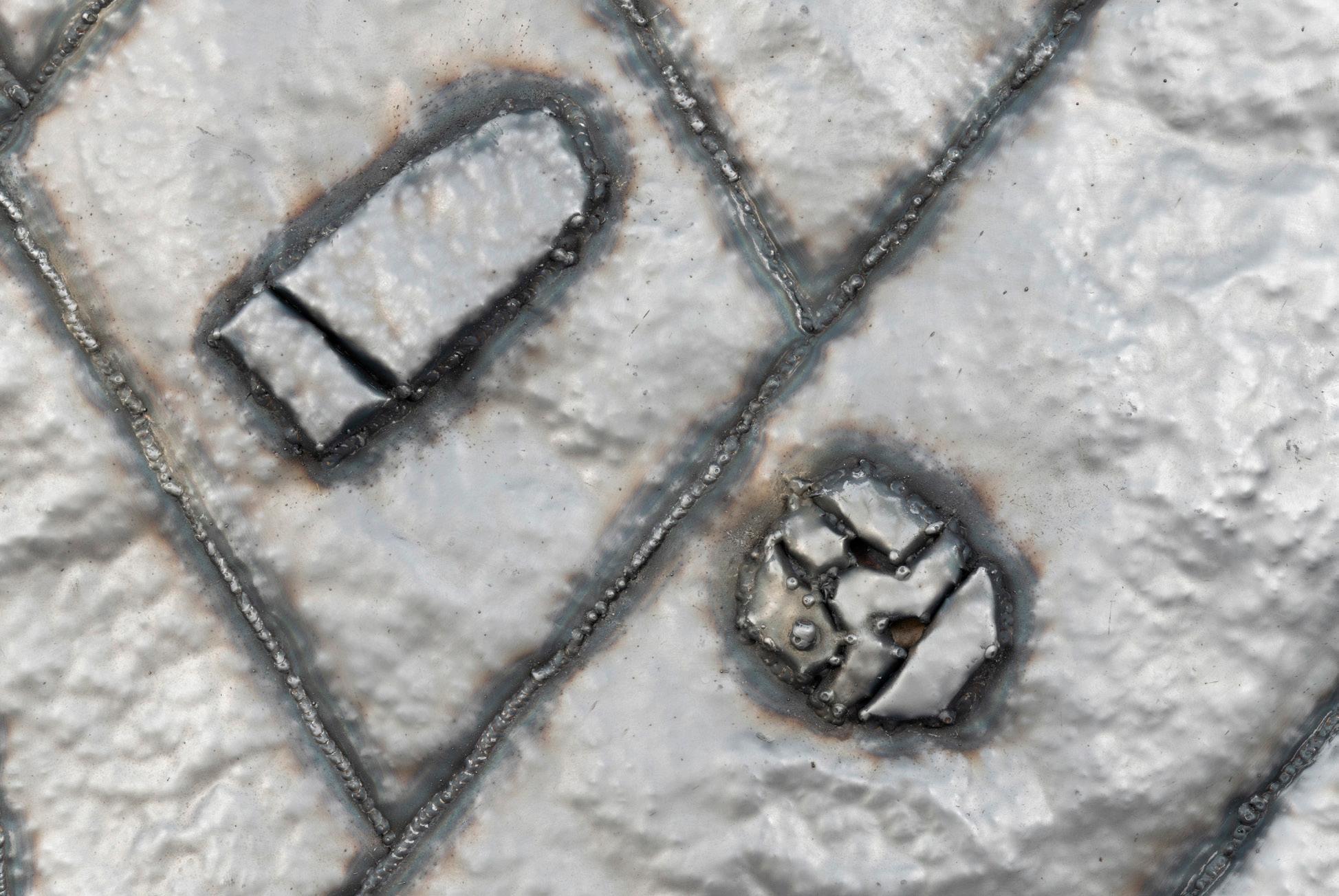
sculpture are visible but unlabeled, Wong is represented in Lee’s memorial without being explicitly identified, his font illegible to those who do not read ASL. The obliqueness of Lee’s work, here and in other coded references, functions as a form of protection, carving out a semi-private space for the trans-geographic, transgenerational queer community whose collective memories he preserves and celebrates. Together, Joumaa, Sim, Cortez, and Lee’s works argue for the need to preserve collective memory at a time when the historical narratives of marginalized groups—citizens of the Global South and postcolonial states, as well as those who have been othered due to their sexual or political status—are not only at risk of eroding or vanishing but also constitute elements of a vital repository of cultural knowledge. This knowledge can be used to destabilize the pernicious holdovers of imperialism and virulent new forms of exclusion present in our world today. To that end, these four Biennale presentations call upon viewers to scour archives, cultivate intergenerational dialogue, investigate visual traces, and seek the historical causes for the cultural stories that have faded (or are at risk of fading) from collective memory. Together, they make the case for embracing uncertainty, curiosity, and care—practices that are essential to the active maintenance of collective memory.
Jenny Wu is a critic, essayist, and the New York-based associate editor of ArtReview. Her work also appears in The New York Times, The Washington Post, e-flux, BOMB, and elsewhere. She teaches art writing in the visual arts program at Brooklyn College CUNY.
1. American Heritage Dictionary of the English Language, fifth edition (2011). Retrieved August 16, 2024, https:// www.thefreedictionary.com/shibboleth.
2. Marc Redfield, Shibboleth: Judges, Derrida, Celan (New York: Fordham University Press, 2020), 1. In more recent history, U.S. soldiers stationed in Asia during World War II were instructed to have unidentified individuals say “lollapalooza.” The first two l’s, if pronounced as r’s, indicated that the speaker was Japanese, and soldiers were told to “open fire without waiting to hear the remainder.” See: Oliver Gramling, Free Men Are Fighting: The Story of World War II (New York: Farrar & Rinehart, 1942), 315.
3. Redfield, Shibboleth, 33.
4. Redfield, Shibboleth, 2.
5. “Doris Salcedo – Shibboleth (2007),” Signs: Journal of Women in Culture and Society, accessed September 23, 2024, https://signsjournal.org/doris-salcedoshibboleth-2007/.
6. “Review – Exhibition – Doris Salcedo: Shibboleth,” October 24, 2007, Architects’ Journal, https://www. architectsjournal.co.uk/practice/culture/reviewexhibition-doris-salcedo-shibboleth.
7. Yarden Katz, “Intelligence Under Racial Capitalism: From Eugenics to Standardized Testing and Online Learning,” Monthly Review, September 1, 2022, https:// monthlyreview.org/2022/09/01/intelligence-underracial-capitalism-from-eugenics-to-standardizedtesting-and-online-learning/; Alexander Leissle, “Joyce Joumaa: That Was Then and So Is Now,” ArtReview, June 10, 2024, https://artreview.com/joyce-joumaa-interviewmemory-contours-60th-venice-biennale-foreignerseverywhere-alexander-leissle/.
8. Julia Eilers Smith, “Joyce Joumaa,” La Biennale di Venezia, accessed September 24, 2024, https://www. labiennale.org/en/art/2024/nucleo-contemporaneo/ joyce-joumaa.
9. Marco Scotini, “Disobedience Archive,” La Biennale di Venezia, accessed September 24, 2024, https://www. labiennale.org/en/art/2024/nucleo-contemporaneo/ disobedience-archive.
10. “‘Requiem’ at the Venice Biennale,” Sim Chi Yin, accessed September 24, 2025, https://chiyinsim.com/ requiem-at-the-venice-biennale/.
11. Charlotte Jansen, “The village that fell into a river: Sim Chi Yin’s best photograph,” The Guardian, May 15, 2024, https://www.theguardian.com/artanddesign/article/ 2024/may/15/village-fell-into-a-river-sim-chi-yins-bestphotograph.
12. Elizabeth A. Newsome, “Precious Stones of Grace: A Theory of the Origin and Meaning of the Classic Maya Stela Cult,” in Eighth Palenque Round Table, 1993, eds. Martha J. Macri and Jan McHargue (San Francisco: Pre-Columbian Art Research Institute, 1996), https://www. precolumbia.org/pari/publications/RT10/Precious.pdf.
13. Eleanor Harrison-Buck, “Killing the ‘Kings of Stone’: The Defacement of Classic Maya Monuments,” in Ritual, Violence, and the Fall of the Classic Maya Kings, eds. Gyles Iannone, Brett Houk, and Sonja Schwake (Gainesville: University Press of Florida, 2016), 61–88.
14. One of the glyphs, which references a monolith known as “Monumento #47,” looted in El Salvador in 2015, may predate the Maya civilization. See: María Luz Nóchez, “Hurtan en Santa Ana escultura ‘cabeza de jaguar’ de 2,300 años de antigüedad,” El Faro, March 6, 2015, https://www.elfaro.net/es/201503/el_agora/16672/ Hurtan-en-Santa-Ana-escultura-cabeza-de-jaguarde-2300.
15. Vik Brooks, “Stela XX (Absence),” Beatriz Cortez, accessed August 30, 2024, https://beatrizcortez.com/ stela-xx-absence/.
16. Brooks, “Stela XX (Absence).”
17. Anna Son, “The Universe of Queer Artist Lee KangSeung,” Harper’s BAZAAR Korea, April 25, 2024, https://www.harpersbazaar.co.kr/article/1864018.
18. Eileen Ng, “Singapore will decriminalize gay sex, but continue to prohibit same-sex marriage,” PBS News, August 21, 2022, https://www.pbs.org/newshour/world/ singapore-will-decriminalize-gay-sex-but-continue-toprohibit-same-sex-marriage.

Ceradon is a new gallery in the living room and stairwells of an apartment located just off North Alvarado Street in Echo Park. Founded earlier this year by Andra Nadirshah and Stevie Soares, the gallery is focused on bringing attention to trans artists working across divergent media and modalities. Both of the founders are practicing artists and hold professional roles at commercial Los Angeles galleries. As PHILTH HAUS, an “artist collective” created by Andra in which she operates as six distinct artist-personae, Andra has exhibited at institutions such as KW Institute Berlin and participated in De Ateliers Residency Program; Stevie is an abstract tattooer who also works in painting, drawing, and digital media. Andra currently works as sales director of Morán Morán, while Stevie is a Facilities Coordinator at BLUM.
I met Andra in 2022 at an opening at Human Resources of one of her three concurrent exhibitions of LYLEX 1.0, a project that involved, among other elements, a wellness product made of mushrooms that had been fed transfeminine blood. She introduced me to Stevie, and since then, the three of us have been in an ongoing conversation about art, culture, and social change, especially in relationship to the hypervisibility of trans people
in the world right now (and the ways this visibility compounds and escalates the challenges facing trans people).
In a social and political environment that uses trans bodies to create polarizing tropes for political gain, Ceradon directly addresses the economic challenges faced by the transgender community, which has been historically excluded from professional spaces. Many trans people turn to creative pursuits to make a living. The gallery is working to ensure that this artistic production is recognized and valued, both for its cultural contributions and as a driver of the social change necessary to transform repressive narratives about trans individuals. For instance, the gallery’s first show, Premiere Ink, included seven trans artists who make their living tattooing. The second show, Taste & Discernment, curated with the publishing platform AQNB**, showcased Max Göran and Samuel Acevedo, whose works recontextualize the signifiers of their own marginalized social and class identities.
Ceradon positions the gallery as a place where speculative worlds based in the specificity of trans artists’ experiences can exist temporarily. Because trans people are both hypervisible and alienated from dominant societal narratives around sex, love, family, money, and community, the art made by trans people comes from a necessary and unique critical distance that has the capacity to create “whole new worlds,” to quote the late transfemme musician SOPHIE (“Promises might come true/Promises of a life uncontained,” she sings.)1
Ceradon proposes that galleries can drive social change by enacting mutual aid and interconnectivity, community endeavors that trans people have historically practiced. Trans people have necessarily created communities that exist across time and space, finding and creating lineages with those
Molly Larkey
who came before—these historical throughlines serving as essential support. Bringing this history of trans community into the gallery space, thereby creating a present-day archive, is another important part of the world-building that is central to Ceradon’s mission.
Molly Larkey: What was the initial motivation to start a gallery that centers trans people?
Andra Nadirshah: One thing I was thinking about with Ceradon is this idea of going beyond inclusion. We wanted to include trans people in the conversation, not just because they’re trans, but because we think that trans people have had to develop a radical honesty (in relation to themselves, just coming out as trans). I think that when those same people are tasked with making art, they have already honed in on an ability to make radically honest reflections of the world, and therefore produce art that is a very distilled version of reality. Stevie and I, coming to this as artists and as stewards of this project, are interested in work that is presenting a stark honesty that people are forced to contend with.
Stevie Soares: The reality for trans folks is that there’s not a seat at the table currently. That isn’t always obvious because people have interacted with trans people in a very superficial way, mediated by screens (a.k.a. media). Inviting the public into our home is one way for us to make real the lives of a few of us.
[The gallery] serves as a proxy for a larger ideal where trans people are more integrated into society and not feared, tokenized, or fetishized. The gallery is an invitation and a necessary call to action, for ourselves individually and as a community. And support has come together so naturally that it has affirmed my instincts about what was so evidently lacking.
AN: The media specter of transness is like a ghost—a superficial reflection of lived experience.
SS: Yes! [The artist] Creighton Baxter has said that one of the ways trans people communicate with each other is through the art that they make, which reaches across time. When I first heard that, it rang really true for me.
ML: There are different kinds of seats at the table—you can have an individual trans artist showing in a gallery, but that doesn’t do the same thing as having a gallery that is focused on bringing trans voices into visibility and building community.
AN: Exactly. [We help facilitate] how at least some trans people get introduced or mediated through the art market. There is something important and special about how we, as trans people, are thinking about how to give trans artists more agency around how their work is brought into the art world. I do think that there is an emergent interest in the contributions of trans people to art, and that it has to be handled carefully and with the agency of trans people [at the forefront].
SS: [We are] artists who are attempting to do justice with a curatorial practice —to a community, to an idea. Andra and my artistic practices require deep levels of refinement [that] comes through in our curatorial practice in a way that maybe is not the same as someone who is a gallerist who doesn’t have an artistic practice.
ML: Maybe we should talk a little bit more about some of the art that you have shown and are showing.
SS: I’m really excited about Ruby Zarsky, who is bringing close this conversation that is a giant elephant in the room around the sexification of trans women, specifically from, in her words, a pornographic perspective. Instead of these pornographic images of trans women being scrolled through or shared in chat rooms, [in Zarsky’s work] it’s out in the open. And people’s reaction to that, I think, is going to be very interesting to observe.

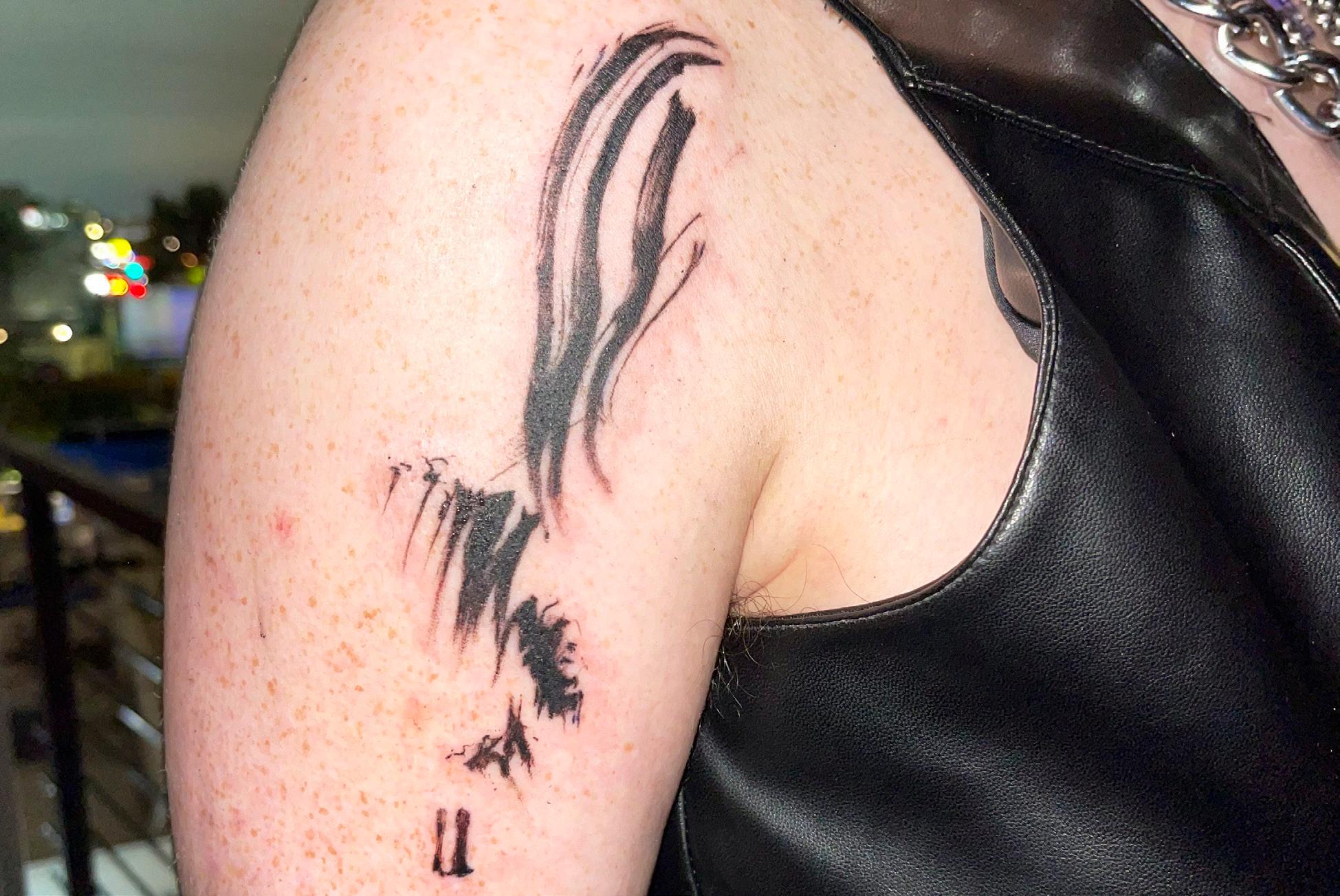


AN: If you look at the statistics of top searches that Pornhub has published, a lot of it is some variant of trans subjects. And in these same states that are consuming trans pornography, you see things that actively harm trans people: bills banning or restricting trans healthcare or policing public space, bathroom bills, etc. So all this attraction to trans people is relegated to private, shameful, hushed experiences. Ruby is subverting that, and asking what happens when you put a painting in a room that makes people have to very publicly engage with their attraction to these types of bodies. Ruby is coming from this background of being a performer, as part of a music duo, Sateen, that has garnered a lot of praise and attention in the music world. She understands how she operates, how her body operates in performance. So now she’s trying to explore that with an object-based practice. We will be starting 2025 with a solo exhibition by Jade Guanaro Kuriki-Olivo, or Puppies Puppies, who has recently played with her nude body in public performance in such a way that also really begins to explore what is the lived experience versus the superficial “mascot,” let’s say, of a particular identity. Jade used to dress in mascots or in suits of different characters that would efface her or mask her body in some way. I think people often now, mistakenly, look at her nude performances or her nude sculpture—one of which was just at Art Basel and the Venice Biennale— and say, “Oh, well, she’s taken off the mascot and she’s showing herself now.” But I really think that actually what she’s done is she’s revealed that the trans body itself, because of how it’s depicted in media, has become a mascot. She’s revealing what’s been done to the trans body through the media, through this endless conversation around people’s bodies and genitals. I have a very personal connection with Jade. And I know that the artist [in the exhibition] following Jade, Creighton, Stevie has a personal relationship to as well.
SS: Yes. The Lovers (2021) by Creighton Baxter was the first work that depicted a trans body that I saw after coming out. And it was really impactful to me to see a trans body depicted in a work of art that coincided with my desperate need to express myself in my gender, but also artistically. There was something in her painting that just screamed out to me.
I have followed that scream ever since…I was at the very, very, very, very beginning of a journey [and] I had no idea what it would entail. It turned into starting my own artistic practice, and then this curatorial practice, eventually leading to showing her work next year, which is a dream come true.
ML: Trans lineages and trans communities are so essential. Like Zackary Drucker—her whole life, really, is about building these lineages. There’s such a strong need among trans folks for awareness of other trans folks, both present and past, because of the really, incredibly impossible circumstances that exist for trans people. Do you think the gallery is participating in that lineage? You’re making these connections that are life-giving, literally, in ways that are material, psychological, spiritual—like fucking everything. It’s all absolutely necessary for trans people’s survival.
AN: Yes, definitely. These openings, our events, closings—they’re excuses for a whole community to come together and feel celebrated and safe, and also see themselves in our artists— see that they could make art or start something like Ceradon. So we hope, through Ceradon, maybe there will be a few more people who survive, have more food on their table, or have more secure living situations.
ML: There is something about transness that is like a thread. When you “pull” it—when you experience the fluidity of gender and the possibilities this opens up—the whole structure based in oppressive gender norms starts to unravel. And so the whole white-supremacist-cis-hetero-

patriarchal-capitalist project starts to unravel.
Paul Preciado says this so beautifully in Can the Monster Speak? (2021) when he talks about his gender transition as a vehicle to move beyond “the regime of sex, gender, and sexual difference…[as] a performative engine that produces and legitimizes…the hetero-colonial patriarchy.”2 There’s something very specific about the trans experience that’s unprecedented in a way, that has this power to dismantle the (failing) oppressive structures that we’re dealing with in this moment.
AN: I like the analogy of pulling at this thread of transness and everything unraveling. I think that’s really apt. I would also say there’s an incompatibility between transness and the system trying to understand and commodify transness.
Because transness inherently says that your identity is something that is malleable and adjustable, and that you are not fundamentally and innately a certain thing. And if you’re a marketer, and you’re looking out at the world and who you want to market to and who you want an algorithm to be designed around [in order to sell a product to that person], it is very hard to do that with a moving target. [It’s] much easier to do that with a person who’s been convinced that they are one thing and one thing only, and only destined to be that one thing.
ML: Yes, like being nonbinary, which is defined in the negative. There’s no way to define it except for what it’s not.
AN: I think that’s why there’s an inability for [these social and economic systems] to entirely reckon with transness, but that’s also what makes for great art. Great art oftentimes is something where you are in its presence, and you’re awestruck or taken aback because it completely makes you feel incoherent when you look at it—you are somehow erased by becoming so absorbed in what you’re perceiving. It’s something
that has an impossible beauty. Or, it does something that connects things in ways that you thought were impossible. Or, [it] reveals an underlying truth or a relationship between things you didn’t think was possible, that did not previously compute with your understanding of the world.
Molly Larkey is an artist, writer, and organizer based in Los Angeles.
Andra Nadirshah has exhibited at institutions such as the KW Institute for Contemporary Art and participated in De Ateliers’ residency program as PHILTH HAUS. She currently works as the Sales Director at Morán Morán.
Stevie Soares is an abstract tattoo artist. She currently works as the Facilities Coordinator at BLUM.
1. SOPHIE, “Whole New World/Pretend World,” Oil of Every Pearl’s Un-Insides, MSMSMSM, 2018.
2. Paul B. Preciado, Can the Monster Speak? Report to an Academy of Psychoanalysts, trans. Frank Wynne (Cambridge: MIT Press, 2021), 55.
Michael Oxley clicks the counter with every new person who walks into Hauser & Wirth’s Arts District gallery. During Lorna Simpson’s 2022 exhibition, he was fidgeting with his counter when he accidentally dropped it. As he knelt to pick it up, Oxley noticed that the color scheme of several paintings change from blue to red. He shared his findings with visitors, inviting them to join him in shifting their perspective. “Stand over here at this angle and see what you see,” he’d say.
“Get on a knee and see what you see.”
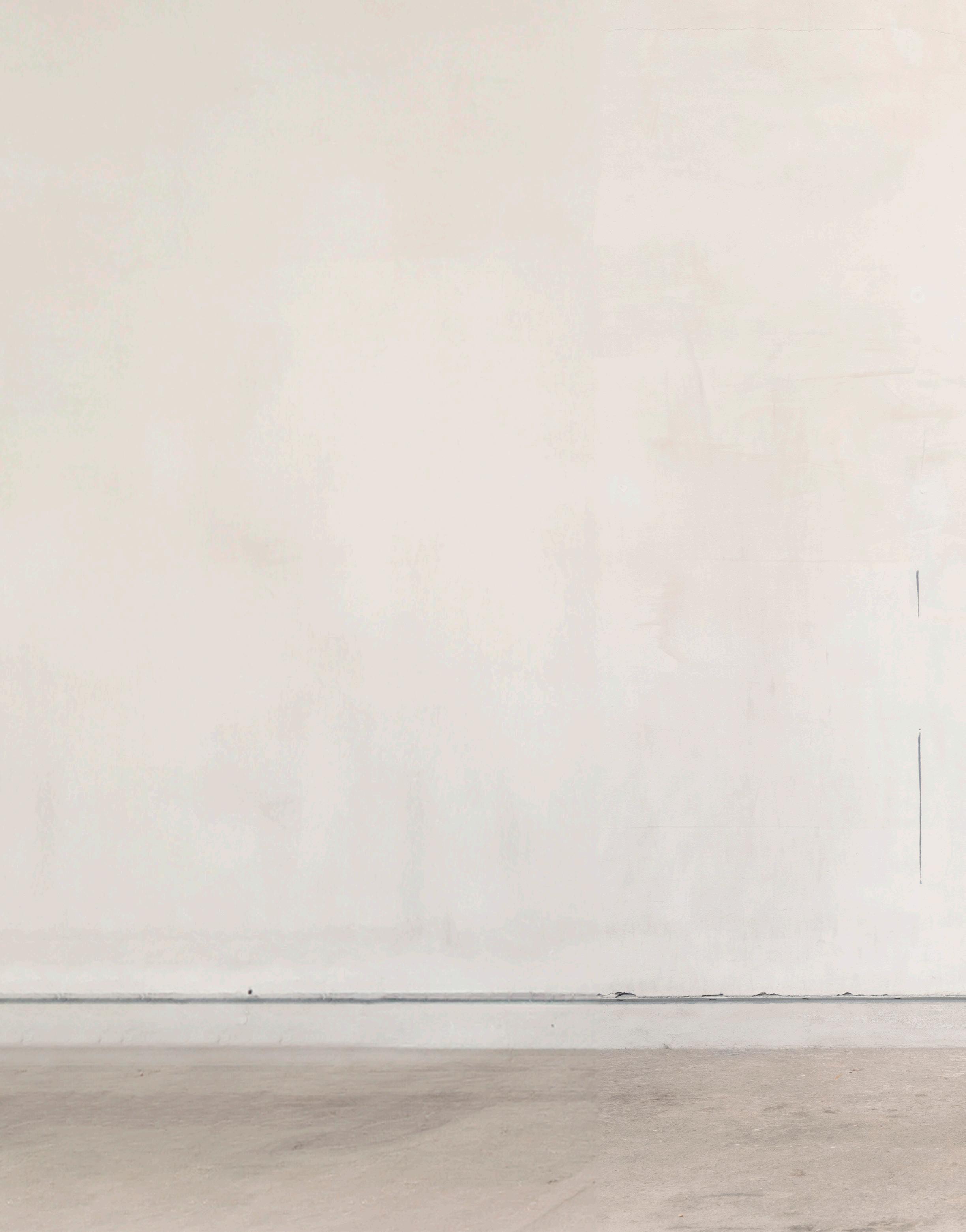
Photography & Interview: Brandon Tauszik

For five years, Oxley has done far more than his security job requires: He’s become a renowned figure of the gallery, making a point to greet people and show them around. Before the gallery opens, Oxley begins his shift by studying the artworks. And his insights haven’t gone unnoticed. “I’ve known Michael for quite a few years,” said Robert Rosenblum, a local artist who visited the gallery on a recent Sunday afternoon. “He finds angles to view the art that nobody else can see. He shows me all these little secrets.” When Oxley showed Simpson how the color of her paintings shifted, she remarked that she hadn’t seen them in that way before.
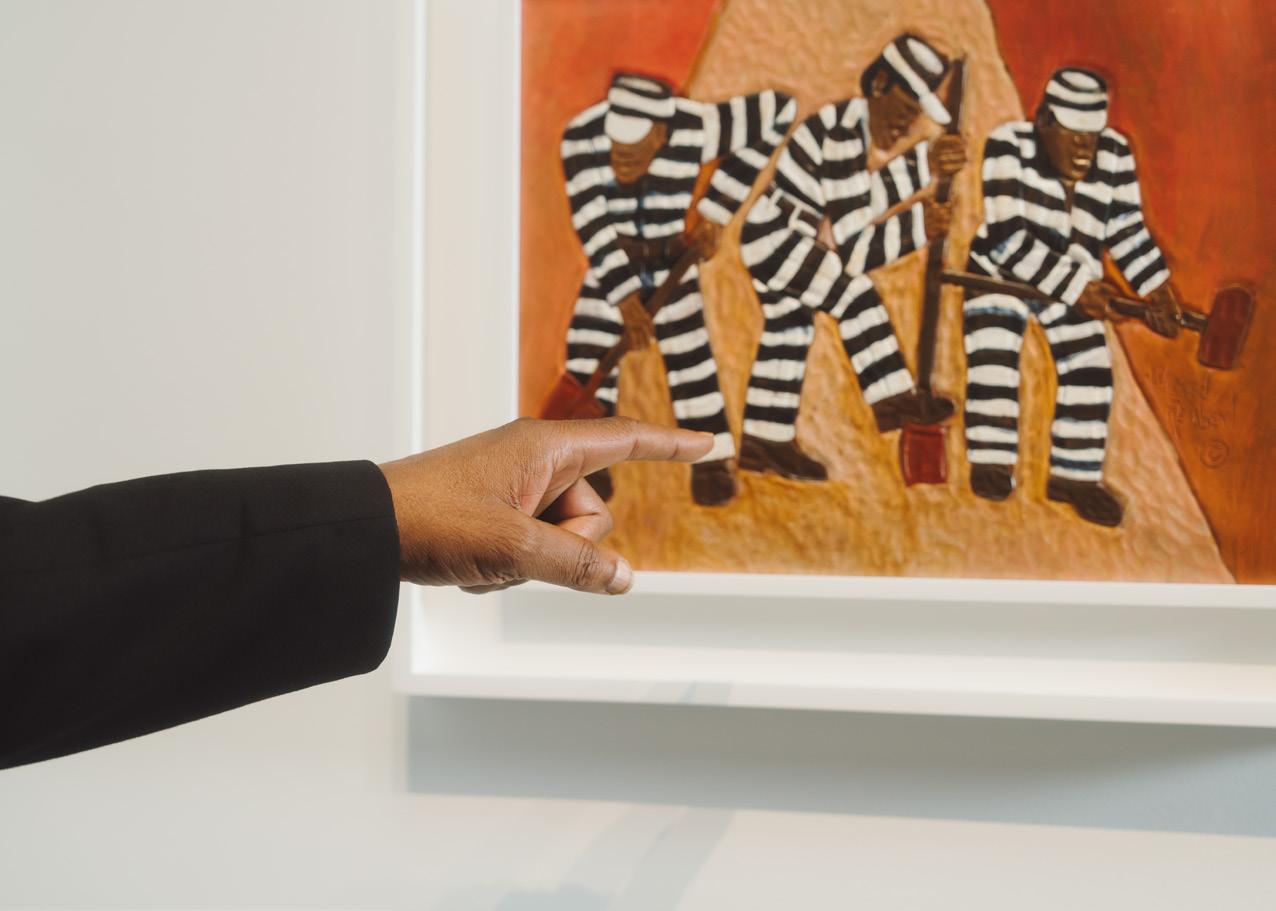



Raised in a working-class neighborhood outside of St. Louis, MO, Oxley moved to L.A. at 26, pursuing a career in law enforcement. He retired as a lieutenant after 34 years, around the same time his wife, Selena. Struck with boredom, Oxley took a weekend job with a private security firm. He was assigned to Hauser & Wirth by happenstance, stationed first in David Hammons’ landmark 2019 exhibition. “I had never seen anything of that nature,” Oxley recalls, wanting to learn more. So he did what he now does with nearly every artist, pulling Hammons aside during installation to ask. “He sold snowballs on the streets of New York…so I asked him, ‘How is that?’ And he goes, ‘Because in New York they’ll buy anything!’ I was amazed.”


Though Oxley says he “knew nothing about art” prior to his work at Hauser & Wirth, it’s perhaps more accurate to say that the position has expanded his engagement with it. He’s long filled his home with prints by iconic artists like Cornell Barnes, Jacob Lawrence, and Ernie Barnes. Now, he counts Simpson, Hammons, Gary Simmons, and Nicolas Party among the artists who inspire him. He was so awestruck by Winfred Rembert’s recent exhibition that he approached the late artist’s son.
“I kidnapped him for hours,” he said.
“I wanted to know everything.” Oxley learned minute details that he would not have known had he not asked, like that some of the figures in Rembert Sr.’s work capture his children posing.

While commercial galleries often exude a cold, profiteering austerity, Oxley invites another way to see and engage with art—one that goes well beyond his job description. He uses each conversation, each subtle shift in perspective, to close the distance between the visitors, the artists, and the art. As Oxley fosters his own curiosity about art—its meaning and how to continuously look at it anew —he remakes the gallery into a place for human connection, where all opinions and ideas are valid and where the meaning of a work is co-created by those who encounter it together.




June 9–August 25, 2024
Introduced as the first two chapters of a planned trilogy of videos, Jordan Strafer’s Los Angeles debut at the Hammer Museum looped like rerun episodes in a 1990s TV soap opera. Based on the 1991 Florida trial of William Kennedy Smith (nephew of the former U.S. President), who was charged with and ultimately acquitted of raping a woman at his family’s Palm Beach estate, Strafer’s LOOPHOLE (2023) and DECADENCE (2024) feel inspired by the grayer edges of mass media: reading like an amalgam of an erotic thriller, daytime soap, true crime documentary, and court TV. Strafer wields the moving image as the place where we commonly broadcast and consume dynamics of power for their dramatic (or traumatic) effects.
Within a bare, Lynchian all-red room furnished with two plump leather sofas, viewers were invited to settle into an uncomfortable story. Against sparse courtroom scenery, LOOPHOLE fictionalizes the trial itself; DECADENCE follows with an imagined party celebrating the verdict at the Palm Beach Kennedy estate (the scene of the crime). Stylistically, think Days of our Lives perversion, constructed through conspicuous musical cues, dramatic stage lighting, prosthetically thick makeup, crunchy sound effects, and
a script that is at once camp, benign, and disturbing. Together, these works form a brief but historical vignette of white American misogyny that is both exceptionally composed and hard to watch.
Entering LOOPHOLE, we follow closely behind a blond woman in a pink hourglass-silhouette skirt suit. As she walks into a courtroom to take up her post at the jury bench, the camera’s slight movement gives a reality TV sense of proximity to the proceedings. Next, we cut to a whirring handycam that follows from a distance as another blond takes up her uncomfortable perch at the witness stand. The low-grade footage feels historical, as if belonging to state archives, directly connected to the moment it records. The witness is about to be cross-examined by an older male attorney. As he appears, the cinematography crosses back into the glossier style with which the film begins. Xylophonic musical cues envelop an unexpected tension between the attorney and bombshell juror—they exchange surreptitious glances, a wink, slight smiles. In the 1991 case, a covert romance was indeed unfolding between defense attorney Roy Black and juror Lisa Lea Haller (by 1994, the two would be married).1
The witness waits. In terse monosyllables, she will answer questions about the night of her friend’s rape. We see and hear the crinkle of a plastic evidence bag containing a single Manolo, examined by a gloved hand and canned camera flashes. Further transmogrifying reality into uncanny fiction, the witness testimony in LOOPHOLE was lifted word-
for-word from the actual court transcripts. As it turns out, the cross-examination was in part ghostwritten by Strafer’s late mother, who served as an attorney on the defense team during the trial.2 Here, through a Law and Order-style montage, she is introduced only as “The Pen.” This synecdoche points to her implicated status as a marginal tool, but also as the one who authors. She seems blank, untroubled. A palpable feeling of estrangement enveloped me while watching Strafer’s videos, as each female character presented in the film is estranged—either disturbed and pushed out, or formidably present but empty. In another scene, Smith’s doppelganger addresses the press corps outside the courthouse. With a beaming smile and voice echoing, he performs his gratified innocence as cameras flash. A brunette woman dressed in black enters the periphery, alone. Her face is blurred, then briefly revealed as she moves—a formal reference to the 1991 trial, during which the plaintiff’s identity remained obscured by a black dot (though it was eventually revealed in the tabloids and, after the trial had concluded, by the victim herself).3 In LOOPHOLE, the woman’s (temporary) facelessness feels metonymic for the countless others who have witnessed and identified with her experience. Back in the emptied courtroom, now darkened, the defense attorney and bombshell juror dine and slow dance; Smith later croons Sinatra, spotlit on the stand. True to reality, the sensational elements of this story easily
Laura Brown
eclipse the trauma and erasure experienced by the faceless victim. Then, in the last few seconds of the video, as she’s embraced (trapped?) by the defense attorney, a single, useless tear runs down the bombshell juror’s cheek.
Next, DECADENCE stages a nauseating victory celebration at the Kennedy estate, furnished with colorful banquets of food, drink, and WASPs milling about. The same characters emerge. At one point, The Pen briefly exits the party for the restroom. In this private space, she starts fiddling with something just outside of the frame—perhaps changing a tampon or fishing something from a purse. It turns out to be a breast pump, which she begins to fill, staring blank-faced in the mirror. The year is 1991. Strafer, who was born on the last day of 1990, would have been an infant. The doubling of fiction with reality suddenly produces a direct liquid line to the artist herself. It’s a strange reveal: rape trial as the backdrop to her gestation; her mother’s quiet participation in the violence as substance for Strafer’s art; the extraction of her physical sustenance set against nauseating decadence.
A reflection starts to emerge around our expectation of an artist’s biography as source material, even subject, for their work—and our common desire for this connection to be at the same time extricated, clarified somehow. For Strafer, these biographical hallmarks are present, but their irreconcilability is kept intact. As a beautifully produced Aesopian window in time, this story does not clarify nor conclude.
Rape is irresolvable, it only ricochets. And so, in this fable, perhaps the figure of the artist is something like The Pen, at once a creator (of life, art) and susceptible to being a participant in its violation. DECADENCE ends in a flashback, as the victim flees in slow motion down a darkened hallway, Smith following behind in a towel. She finds a landline and dials a number, sinking down the wall. Presumably, she calls the friend who later testified to coming to her aid that night, linking us back to the beginning of LOOPHOLE. The narrative now returning in a circular loop, Strafer’s art-making becomes a means to process the thing that can never be resolved.
1. “Verdict: ‘I do,’” Page Six, March 2, 2010, https://pagesix.com/2010/03/02/ verdict-i-do/.
2. Marie de Brugerolle, “Liminal Systems of Representation. A Conversation with Jordan Strafer,” Flash Art, April 12, 2023, https://flash---art.com/article/ jordan-strafer/.
3. While NBC identified the victim, Patricia Bowman, throughout the trial, most outlets refrained from doing so until she appeared on ABC News’ “Prime Time Live,” where she urged other rape victims to tell their stories and defended herself against claims that she was “psychologically troubled.” See: Bill Carter, “Accuser in Rape Case Elects To Make Her Identity Public,” The New York Times, December 19, 1991, https://www.nytimes. com/1991/12/19/us/accuser-in-rapecase-elects-to-make-her-identity-public. html.
May 23–July 19, 2024
Keith Mayerson has been working on his My American Dream series for over two decades, creating hundreds of paintings that tell a story of the United States as it appears in popular media.
Although the series began in 2000, it began to take shape after September 11 of the next year, the trauma of 9/11 inciting Mayerson to counteract the bleakness of the news cycle by creating “images that were talismans of good energy.”1 His paintings have included public figures like Harvey Milk and Barack Obama and popular fictional characters from The Wizard of Oz (1938) and The Muppet Show (1974–81), all wearing wide smiles as if posing for photos in a family album. Creating art based on beloved national icons can be a palliative exercise, but the latest works by Mayerson, the son of a psychoanalyst,2 tap into an anxious, paranoid American psyche. Despite his deliberate retreat into nostalgia and optimism, the artist’s handling of subjects in My American Dream: City of Angels, his recent exhibition at Karma, seemed haunted by a feeling of distress, as if realities beyond the canvas threatened to invade at any moment.
In City of Angels, one room centered on American cultural symbols and the second on landscapes and skyscapes. Intermixed with these references, Mayerson pulled images from his personal history, inserting himself within a broader cultural narrative to create a hallucinogenic suite of paintings. Subjects ranged from Hollywood to sports to pop culture, from Space Jam (1996) to Skateboarder magazine (1964–2013). On the gallery’s central wall, two paintings hung side by side: Los Angeles from a Plane, a canvas the size of an oversized projector screen on which the details of an aerial view of L.A. are
Alexander Schneider


54
rendered indistinct by a purple haze; and the slightly smaller Cheech and Chong (both 2023), depicting a still from the 1978 film Up in Smoke in which the pair get stoned in their Chevy Impala. Together, the two works seemed to define the scale and atmosphere of the entire exhibition, approaching from above and then zooming in on a city that’s forever sinking into a delirious cloud of Hollywood narratives and twentiethcentury nostalgia. Yet, in Los Angeles from a Plane, Mayerson transforms what might have been a dreamy, postcard view of L.A. into a landscape of knobby textures and sickly green blemishes; in Cheech and Chong, the over-saturated palette and anxiously tight brushstrokes amplify the characters’ worried expressions, turning a bad trip into a full-on existential crisis. Alongside Cheech and Chong, whose “bromance” the artist sees as a positive model of homosociality, other works in the exhibition subtly celebrate queer icons.3 Billie Jean King, Wimbledon 1975 (which pictures the tennis star holding the Venus Rosewater Dish) and Jim Henson and the Muppets (both 2023) (a recreation of a publicity shot of the puppeteer and his creations) honor their titular figures, but, as with other paintings in the exhibition, there is a disconnect between subject and mood. Mayerson’s careful brushstrokes seem labored—perhaps deliberately so—making the wide smiles of King, Henson, and the Muppets look strained and uncomfortable. King’s posture as she hoists the trophy above her head is stilted, the scene cropped too close, the blurred spectators in the background
emphasized with a few too many details, turning an air of triumph into one of self-consciousness.
In Mickey, My Sister and Me (2023), Mayerson’s biography enters the room, the anxiousness of the stiff brushstrokes befitting the subject—two siblings standing awkwardly for a photo with a costumed employee. The feverish, candy-colored palette underscores the artifice of the setting. Though, like a theme park insisting it is the “happiest place on Earth,” Mayerson’s focus on a vision of a cheerful, bygone America seems unable to mask a more stilted emotional register.
The insular, pop-cultural nostalgia of the first gallery was recontextualized by the second, where paintings depicted national parks and Indigenous lands, outer space, and famed UFO sightings (or Unidentified Aerial Phenomena, UAP, in today’s official parlance), all devoid of people. Mayerson intervenes with psychedelic additions, situating each work somewhere between sublime and eerie. Battle of Los Angeles, February 24/25, 1942 (2024), for example, reworks a black-and-white photograph of searchlights monitoring the sky above the city’s hills originally published on the front page of the Los Angeles Times in the tense wake of the attack on Pearl Harbor.4 In the painting, the graininess of the source image is replaced by purple and blue swirls from which rudimentary eyes and faces emerge, bringing the viewer under surveillance. USS Roosevelt ‘Gimbal UFO’: Still from the Declassified Jan. 2015 Video (2023), meanwhile,
renders a low-resolution government surveillance video taken off the coast of Florida5 in trippy oranges and purples, the UAP in question overshadowed by the source material’s inscrutable timestamps and military codes. An added swarm of menacing eyes peer back out from the ocean and sky of the landscape. Fantastical paintings like these, intermixed with more straightforward pastoral landscapes—like Rocky Mountain National Park or Joshua Tree (both 2024) —kept the viewer on edge, searching each canvas for signs of life and otherworldly (or militaristic) intrusions. The prevailing military presence in the works in the second gallery reminds us that the U.S. military is the source of so many UAPs, whether produced by its weapons testing or merely recorded near its sites by its own surveillance technology. An uneasiness bubbled under the surface of this group of paintings, as if Mayerson were trying to square our place in the natural world and cosmos with a pervasive military force. This was a different vision of the U.S. than the first gallery’s pop culture diversions, but both were haunted by a similarly anxious mood. By Mayerson’s account, both are equally prominent parts of the country’s cultural psyche. The exhibition was an ambivalent diagnosis of the American subconscious, alternating between optimism, distraction, and dread.
1. Karma Gallery, “A Conversation: Keith Mayerson and Ryan Linkof,” YouTube, July 22, 2024, https://www.youtube. com/watch?v=vyhbXWbwmV4, 4:40.
2. Karma Gallery, “Keith Mayerson, My American Dream: City of Angels,” press release, May 2024, https://
3. Karma Gallery, “A Conversation: Keith Mayerson and Ryan Linkof,” 20:20.
4. Scott Harrison, “From the Archives: The 1942 Battle of L.A.,” Los Angeles Times, February 23, 2017, https://www. latimes.com/visuals/framework/ la-me-fw-archives-1942-battle-la20170221-story.html.
5. U.S. Department of Defense, “‘Look at That Thing’: Footage Shows Pilots Spotting Unknown Object,” video, The New York Times, May 26, 2019, https://www.nytimes.com/video/us/ 100000006525294/ufo-video-navy.html.
June 14–November 9, 2024
they are seeing and how they should view the body in front of them.
In a 1964 Supreme Court case about whether an Ohio movie theater could show Louis Malle’s The Lovers (1958), a film in which an adulterous Jeanne Moreau shows her breasts, Justice Potter Stewart vaguely defined pornography as “I know it when I see it.”1 This subjective standard is still regularly applied to art that explores the human body and sexuality, and the value of work as art or pornography is decided contextually. Now, 60 years after that case was decided in favor of censorship, we have a new litmus test in Robert Andy Coombs’ No Content Warning, recently on view at ONE Archives at the University of Southern California Libraries. Coombs’ images are in the tradition of queer photography that explores the body and sexuality, though they feel more explicit than what has come before, challenging the viewer’s subjective idea of what
The nine roughly 40 by 50-inch photographs in the exhibition display what some might see as pornographic: Depictions of tumescent phalluses, anal penetration, and oral sex adorn the walls of the windowless gallery. These are sharp, richly colored scenes of Coombs’ sex life. In Rashad (2019), the artist is seen on his bed, his erect penis inserted in the anus of an intimate. In Ménage à trois (2019), Coombs leans against the white tiles of his shower, his body framed between two men. Eyes closed, they passionately kiss his cheek and the head of his penis while he stares gravely at the camera. A third photograph shows Coombs lying naked on his back, straddled by another man, as they perform oral sex on each other (In Chris’s Studio, 2019). These explicit sexual acts are accompanied by photographs that are more suggestive but still deeply erotic. Hidden among the park foliage, a naked man squats on a bench as Coombs sits before him, his head angled near his crotch, in Cruising (2021). The back of Coombs’ black electric wheelchair, and all of its wiring and machinations, is at the center of the bucolic photo. What separates these photos from those typical of the genre is that Coombs, who is paraplegic, has made himself the main subject. Alongside explicit depictions of sex, the photographs also picture Coombs’ private life and space. In Rashad, Coombs’ bedside table is covered in medical supplies and a lime green multiweek pill organizer. Above the headboard is
a store-bought frame filled with snapshots of Coombs’ life before his spinal cord injury. In Ménage à trois, the shower’s accessibility grab bar looms beside the three men. At Coombs’ stomach runs a thin rubber tube for his unseen urostomy pouch. The pouch is the star of the only photo from which Coombs is absent, Piss Yellow Hair (2019): An unnaturally blond young man in a leather harness, framed close-up from behind, holds the bag above his head and pours Coombs’ urine on himself from its spout—the Coombs way to piss play.
The photographs, curated by Alexis Bard Johnson, Cyle Metzger, and Quetzal Arévalo for the exhibition, are from the series CripFag (2017–present)—Coombs’ main project since I met him in 2018 at Yale, where he and my partner were classmates. His photos were always a shock at crits, not simply because of the explicit subject matter, but because he was using color so vibrantly and —assured of his work—printing his images at a large scale. There was nothing diffident in his presentation, then or now.
So much of popular queer male photography has been about demurely showing an ideal male body—for instance, the 1940s black-and-white nudes of George Platt Lynes or the midcentury beefcake photography of Bob Mizer— and Coombs’ photographs are a refreshing evolution of these classic approaches to gay photography. In 1951, Mizer started Physique Pictorial, a magazine that featured homoerotic photographs of bodybuilders and fetish drawings by artists like Tom of Finland.2 Physique Pictorial was deeply influential on queer karmakarma.org/exhibitions/keithmayerson-la-2024/press-release/.
Philip Anderson
art, inspiring photographers like Robert Mapplethorpe.3
While Lynes and Mizer photographed naked men with cheery smiles and flaccid penises, Mapplethorpe, influenced by the fetish scene he encountered in New York clubs, made more explicit work about piss, leather, and even fisting in his 13-image series X Portfolio (1977–8). X Portfolio was a challenge to, and an evolution of, the limits of what a photographer could show. Mapplethorpe pushed queer photography to a new standard, the once obscene now classified as art.
Coombs, whose disability prevents him from having the perfect beefcake body, places himself in his photographs and intimately shows his body, challenging viewers to view him and other disabled people as sexual beings. In six of the nine photographs in No Content Warning, Coombs looks directly into the camera as if staring back at the viewer. In Blowjob (2018), Coombs is tipped back in his wheelchair and his eyes are all we see of his face, which is otherwise blocked by the bare ass of a model-esque man. The man he’s presumably performing oral sex on is immaterial because the most intimate moment is happening between Coombs and the viewer. Here, and elsewhere, Coombs’ eyes say, “I see you, I know you see me, don’t look away.”
1. Jacobellis v. Ohio, 378 U.S. 184 (1964).
2. Bob Mizer Foundation, “Physique Pictorial [Vintage],” accessed September 26, 2024, https://store. bobmizerfoundation.org/collections/ physique-pictorial-vintage.
3. ARoS Aarhus Art Museum, “Robert Mapplethorpe: On the Edge,” press release, June 2016, https://www.aros.dk/ en/art/previous-exhibitions/2016/ robert-mapplethorpe-on-the-edge/.


June 1–October 27, 2024
In their landmark publication Cruel Optimism (2011), the late queer affect theorist Lauren Berlant articulates the cruelty of having a hope that is predestined to fail. Citing the various methods for feeling attached and secure in contemporary life (e.g., job security and sociopolitical equity), Berlant argues that such aspirations are not only unsustainable but predicated on contingency and crisis.1 This desire for the “good life” against the cruelty of liberal capitalism was especially pronounced in Tamara Cedré’s exhibition Live from the Frontline (Colton and Fontana) at the California Museum of Photography.
Cedré’s exhibition joined photography, audio, found film, archival documents, and drone footage to examine the rise and rapid expanse of manufacturing and distribution facilities throughout the Inland Empire (I.E.) from the early twentieth century to the present day. The exhibition was organized in collaboration with A People’s History of the I.E., a digital archive and mapping platform that documents the histories of working-class, LGBTQIA+, and POC communities in Riverside and San Bernardino, CA, through oral histories, written testimonies, photographic archives, educational resources, and community organizing. Live from the Frontline was an expansive, multimedia
rumination on the industrial transformation of sub/urban landscapes. The exhibition followed the tenuous histories of Kaiser Steel and Colton Portland Cement, two facilities whose rampant and welldocumented histories of worker exploitation, pollution into nearby working-class communities of color, and entanglement with the military-industrial complex are palpable not only in the exhibition but to the communities themselves.2
A dizzying array of archival materials and photographs, including promotional brochures from Kaiser Steel, marketing trinkets such as a paperweight, and family photos of Colton residents who lived around the cement plant, were installed on the gallery walls. A large vitrine featured annual reports and postcards from Kaiser Steel laid near materials that pointed to worker exploitation: a Fontana Works strike and pollution poster; parodic comic strips of Henry J. Kaiser; candid photos of workers in precarious labor conditions; and the corporate satire paper The Snorter, which was created by and for Kaiser Steel employees.
Cedré’s curation of objects and documents that attest to the industrial violence wrought upon primarily Latinx, Indigenous, and Black communities was nuanced through their proximity to neighboring materials tinged with more utopic sentiments. Promotional city posters such as Colton The Hub City, created by the Colton Chamber of Commerce in 1914, depict a hybrid industrial landscape whose topography is replete with a thriving citrus grove, active railway, factories,
and “good schools,” as written on the poster. An archival photograph by G. Haven Bishop titled Power Consumers, Portland Cement Works, Colton, Southern California Edison (1910), positions the Colton factory comfortably on the horizon line between a clear, vast sky, expansive plain, and the San Bernardino foothills. Not entirely within the viewer’s reach, the factory appears as a distant, almost tangible industrial oasis, pluming with activity.
Archival reproductions of personal photographs like those in Colunga Family Snapshots from South Colton (1945–54), courtesy of the Colunga family, disrupted this sense of dis/utopic isolation. Stills of heteronuclear Latinx families posing idyllically against the backdrop of a rapidly transforming city typify the romanticism attributed to upward economic mobility —an alluring promise to many migrant communities in the early and mid-twentieth century. In the exhibition, these photos were placed in tension with candid shots that tell a different story: An image of a worker lugging a crate downhill while people gather leisurely in the distance, and various stills of empty factory lots speckled with telephone wires, puncture the idealism of neighboring photos with the grievous realities of the class divide. These extensive archival materials were met with photographs, audio, and video works made by Cedré, many of which appropriated and subverted the formal strategies and aesthetics of the archival photographs. For example, Cedré’s photograph, The Leveled Top of Mt. Slover (2024), closely mirrors the
visually balanced sightline in Bishop’s Power Consumers. Her depiction of Slover Mountain features a strikingly similar use of industrial steel exteriors; however, unlike Bishop’s paradisiacal landscape, The Leveled Top features a seemingly endless stack of freight containers, turbid clouds, and no sign of active life apart from the trace of tire marks imprinted in the dirt. Cedré’s contrasting photograph de-romanticizes the affinities Bishop attached to an industry in its nascency, looking instead towards its alienating and rampant homogeneity in the contemporary present.
Cedré expands on this idea in the video Kaiser Steel Productions (2024), which intercuts aerial drone footage of Eagle Mountain in Riverside County with found footage from a Kaiser Steel company promotional film touting stable employment. A film clip of a disaffected man attending a children’s baseball game concludes the video as a disembodied narrator ruminates on mass layoffs and union strikes, the likes of which would impact the mill’s 8,800 employees until its shuttering in 1983.3 Far from presenting the fallout from these facilities as phenomena long since passed, Cedré’s works demonstrate their ongoing role in displacing minoritized communities. Installed around the corner from this video were two separate Soundscapes titled Colton and Fontana (both 2024), which narrated the often-conflicting attachments many workers and families held with such industries.4 These oral histories included stories from those with an immediate or extended
affiliation with Kaiser Steel and Colton Portland Cement. One narrator in the Fontana soundscape talks at length about the effects of environmental pollution proliferated by Kaiser Steel. Specifically citing the prevalence of industrial contamination and respatialization of urban working-class communities of color, narrators within both soundscapes discuss how the encroachment of such facilities is connected to an extended history of racism and displacement.5 Many of the narrators broadly attest to how industry gets people economically, emotionally, physiologically, and geographically stuck—what scholar Sara Ahmed calls the “stickiness” of affective entanglements.6 As part of a broader rumination on how minoritized communities are exploited through globalization, Cedré nuances the optimism often attached to industrialization. She shows how the harm of a postindustrial present must be not only contended with but actively dislodged from personal and collective fantasies of the good life.
1. Lauren Berlant, Cruel Optimism (Durham: Duke University Press, 2011).
2. See, for instance: Juan D. De Lara, Inland Shift: Race, Space, and Capital in Southern California (Oakland: University of California Press, 2018); Jake Alimahomed-Wilson and Immanuel Ness, eds., Choke Points: Logistics Workers Disrupting the Global Supply Chain (London: Pluto Press, 2018); Alyse Yeargan, “From Rose Colored Nostalgia to Seeing Red: Kaiser Steel and the Slow Violence of the Supply Chain,” Climates of Inequality, 2023, https:// climatesofinequality.org/project/ from-rose-colored-nostalgia-to-seeingred-kaiser-steel-and-the-slow-violenceof-the-supply-chain/.
4. Soundscapes was created by media archivist Henry Apodaca, who organized and culled the audio in collaboration with A People’s History of the I.E.
5. Such narratives clarify how the processes of territorialization instigated by industry are a form of colonial occupation that seizes, delimits, and asserts control over a geographical area. See: Achille Mbembe, Necropolitics (Durham: Duke University Press, 2019).
6. Sara Ahmed, The Cultural Politics of Emotion, 2nd ed. (Edinburgh: Edinburgh University Press, 2014).
3. Department of Toxic Substances Control, “Cleaning up toxic land is paying big dividends in California: Kaiser Steel,” accessed October 1, 2024, https://dtsc. ca.gov/cleaning-up-toxic-land-ispaying-big-dividends-in-californiakaiser-steel/.
July 13–August 31, 2024
The first lesson a boy learns under patriarchal masculinity, bell hooks writes, is to wear a mask. In an act of “soul murder,” as hooks calls it, the boy betrays his authentic self to become a patriarch.1 Subsequently, by wearing this mask, he’s rewarded with power and prestige, feeding a relentless cycle that entrenches traditional masculine gender roles into our society. In Dogs & Dads, a recent group show at Diane Rosenstein, artworks pictured aggressive snarling dogs alongside cheeky, comic-style drawings of fatherhood, exploring the myriad ways this mask of patriarchal masculinity manifests. Playing with the colloquial refrains that cast men as dogs, the exhibition wove together humor, introspection, and symbolism, probing patriarchy’s corrosive effects on boys and men while underscoring that, ultimately, the cost of conforming to patriarchal ideals is one’s self. In the far-left of the gallery’s entryway sat one
Aaron Boehmer


of Karl Haendel’s life-size hyper-realistic pencil drawings—a puppy solemnly staring. The work’s title, I didn’t ask to be born and I don’t want to die. (2024), floated above the puppy’s head as a thought bubble. The drawing, a little over three feet tall, was hung near the floor as if the pup, its fur soft and shiny, was actually sitting there begging for attention, eyes twinkling. A few steps to the right, Bad Drawing! (2024) by David Sipress—a longtime cartoonist for The New Yorker—was sketched directly onto the gallery wall. Crudely drawn, a short man with a faltering hairline reprimanded a wonky-looking dog with a cone-shaped nose. “Bad drawing!” the man exclaims sternly, wagging his index finger at the dog and Haendel’s nearby puppy all the same. The man’s reprimand, a riff on the phrase “bad dog,” playfully jabbed at poor artistic execution while subtly introducing the exhibition’s themes of power, control, and patriarchy. Both dogs seemed to cower under this stern reprimand.
On the opposite side of the wall, this cartoonish levity shifted to a darker tone with Taylor Marie Prendergast’s All That’s Left (2024). In this vast, seven-foot-tall oil painting, Prendergast’s chaotic and energetic brushstrokes stretch a dog’s head across most of the canvas, creating a feeling of dreadful confinement. Many of Prendergast’s greyscale subjects in the show are depicted in perilous, perpetual motion, and here, the dog’s mouth, wide open and drooling, is blurry as if to convey a snapping jaw
in motion. Still, the dog’s eyes are sullen and unmoving, fatigued with dark circles that drag down its cheeks. One could read this dog as Haendel’s puppy, now a bit older and hardened by life —wearing a mask that obscures its youthful vulnerability with rows of knife-like teeth. In Night Watch (2024), another of Prendergast’s muddled oil-paint mirages, two dogs—even more hardened than the last—stand stoically amongst looming trees and gloomy clouds, their mouths muzzled to keep them from lashing out in anger. Echoing hooks’ sentiment that anger is the only emotion that the patriarchy values in men,2 these muzzled dogs’ instinct to protect grants them the distinguished role of night watchmen while also isolating them in punitive seclusion. On a dim-lit path in the forest, they sit in solitude, save for the presence of one another and the shadows encroaching upon them.
Inside Sipress’ cartoon world, satirical domestic scenes double as quippy explorations of other absurdities and disparaging impacts of patriarchal masculinity. In Mind Reader (2020), a man, legs crossed, shouts at a woman, “How should I know what I’m thinking? I’m not a mind reader.” Sipress confronts how men weaponize incompetence against others to evade tasks, often in relation to domestic and emotional labor. Faced with the man’s manipulative tactic, the relatable cartoon woman’s eyes are widened and her brows raised, caught somewhere between bewilderment and an eye roll.
At times, Dogs & Dads felt on the nose in its use of angry dogs as stand-ins for angry men (Haendel’s Angry Dog 9 [2024], a large, close-cropped drawing of a snarling German Shepherd, felt particularly obvious). However, the straightforwardness was tactful. Set in the middle of the exhibition, amongst the cacophony of barking dogs and reprimanding fathers, was a black curtain leading into a dark room. Behind it was a video by Haendel and filmmaker Petter Ringbom called Questions for My Father (2011). If outside the curtain, artworks portrayed the masks that boys and men don to the world, inside this dark space the mask was lifted —all the reprimanding, hostility, and manipulation finally confronted. The video features shots of middle-aged men framed against a black studio background, asking the camera questions they’ve always wished to ask their fathers but never could.3 Some ask about sexuality, affairs, and fantasies; religion, suicide, and depression; race and politics; violence and war; fear and disappointment. By naming oft-ignored emotions about oft-ignored topics, Haendel and Ringbom disrupt the cycle that synonymizes manhood and paternity with repression, anger, and control—the cycle that has entrenched generations of men into patterns of violence, emotional dysregulation, and alienation from themselves and others. Questions for My Father is the crux of the exhibition. Passing through the curtain, the men’s voices echoed throughout the gallery. Their wounded eyes could
be found stowed away in Prendergast’s violent dogs, and their emotional scars left untreated beneath Sipress’ callous dads. Their questions, curious and some rather intrusive, quieted the growling and stifled the aggression. In this way, Dogs & Dads offered an escape hatch from the destructive cycles of patriarchal masculinity. Lifting the mask, or curtain, reveals the potential for change, only to come if men take it upon themselves to begin asking the vulnerable questions, moving toward a culture of healing. It’s possible, then, to imagine a not-too-distant future where a boy can sit comfortably in his vulnerability and softness without contempt or reprimand. This time, the twinkle in his eye stays.
1. bell hooks, The Will To Change: Men, Masculinity and Love (New York: Atria, 2004), 153.
2. hooks, The Will To Change, 7.
3. Karl Haendel and Petter Ringbom, Questions for My Father, 2011, http:// questionsformyfather.com/synopsis.html.
For over four decades, L.A.based artist Catherine Opie has sought to reframe art history with a queer lens. Her practice pays close attention to gender identity and uses art historical touchpoints to shear elitist forms of categorization. Genre/Gender/
Portraiture, Opie’s first solo show in Brazil at Museu de Arte de São Paulo (MASP) gestured to these concerns, placing 66 of her photographs of queer subjects from 1987 to 2022 in dialogue with 21 classic European portrait paintings from the museum’s collection. The MASP paintings ranged from the fifteenth to early-twentieth century and, paired with photographs by Opie, offered a direct connection between the artist’s oeuvre and the art history it cheekily cribs.
mission of disrupting art historical canons.
July 5–October 27, 2024 Mateus Nunes
The spacious, free span, and unwalled exhibition room was filled with works presented within the iconic crystal exhibition easels designed for MASP by Italianborn Brazilian architect Lina Bo Bardi, who also designed the museum’s building. Each of the historical works and Opie’s framed photographs were installed on their own glass panel, anchored by a concrete base, providing the highly unique experience of being able to see the entire show at a glance, the works layering over each other in space across the gallery. Besides the direct connections made by pairing works across the show, the transparency of the crystal easels encouraged interplanar and macrocosmic dialogues through the visual penetrability of the exhibition mounting. This also built a well-materialized argument for hierarchical and compartmental disobedience, one that curators Guilherme Giufrida and Adriano Pedrosa were keen to encourage. Beyond reframing social constructions through Opie’s subject matter, the exhibition disobeyed museum conventions, reinforcing Opie’s
Genre/Gender/ Portraiture deeply intertwined Judith Butler’s notion of “performativity”—a concept that was unraveled by Giufrida in the exhibition catalog1— through which gender agency is based on a symbolic structure of socially imposed signs.2 This notion finds resonance with Roland Barthes’ idea of “posing,” the notion that when the photographed subject is aware of the image-making, they instantaneously and unwittingly pose.3 What’s interesting to Barthes is not the physical or formal pose itself, but the self-establishment of an external image of oneself within this context. This projected image is a performative one, Butler would argue, since one’s presentation to society is always a produced act, either in obedience or disobedience of social norms. Opie’s portraits emphasize that every external image runs through a performative circuit, not only when the photographed subject actively poses (as in most of the works in the show, such as the rare candid photo Oliver in a Tutu, 2004), but because the presentation of oneself in society is inevitably affected by normative societal standards, even when we act in resistance to them.
Giovanni Bellini’s The Virgin with the Standing Child Embracing His Mother (Madonna Willys) (1480–90), for example, depicts a consecrated, performative maternal image linked to purity and holiness. In the exhibition, the painting is paired with Opie’s Self-Portrait/Nursing (2004), in which the artist is seen nursing her child, the

duo elucidating Opie’s discordance with this historically conventional pose of motherhood. In Opie’s portrait, the scarlet backdrop with golden ornamental motifs—elements echoed by the tattoos on the artist’s shoulder and arm— reflects the official, bourgeois atmosphere coined by Western portrait painting tradition. The gilded ornamentation common in early Renaissance paintings reappears in the scarification lines on Opie’s chest which—although faded after ten years of cicatrization—reads “Pervert” with two palm leaves curled over her breasts. Here, Opie honors art history through subversive means, presenting a tender portrait of motherhood that fits less neatly into the archetype of the mother as a holy virgin.
The incisions seen on the artist’s chest in Nursing are fresh and still bleeding in Self-Portrait/Pervert (1994), in which Opie poses topless in front of an ornate golden backdrop, wearing a leather BDSM mask. Seated in a chair with her arms resting calmly on her lap—a pose often found in historical Western portraiture—her bare arms are pierced by rhythmic rows of needles. At MASP, this photo was paired with Francisco de Goya’s Portrait of Ferdinand VII (1808), in which the Spanish king holds the same tranquil pose, bearing a golden scepter in his right hand and wearing noble robes—signs of social distinction that Opie’s body modifications and references to kink upend.
The striking pairing of Opie’s Raven, 1990 (1990/ 2024) and Pietro Perugino’s St. Sebastian at the Column (1500–10) depicts undressed
subjects with hands tied behind their backs in a position of penance and scourge. The Renaissance arcade in Perugino’s painting frames a placid, mountainous landscape typical of Italian paintings of the period, while a scantly clad Sebastian gazes upward, arrows digging into his skin. In contrast, Opie’s portrait pictures a nearly nude figure chained to a metal fence on top of a hill in Los Angeles, barbed wire trailing into the background. The subjects’ gazes in both works are directed upwards, inert, as if in resistance to humiliation and pain—a usual pose of Sebastian in Christian iconography as he awaits martyrdom. Sebastian has been recast as a queer icon by the LGBTQIA+ community,4 a subversion of the Catholic symbol of strength and perseverance that the curators lean into with this pairing, elevating Opie’s queer subject donned in chains to saintly status.
Genre/Gender/ Portraiture critically reflected on the constructs of societal norms by challenging traditional notions of portraiture as containers for invention, contestation, and play.
Subverting historical narratives embedded in the paired classical works and underscoring the importance of queer visibility alongside transhistorical and transcultural dialogue, the exhibition’s curation disrupted the rigid stylistic, chronological, and technical segregation of museum categorizations. The curatorial refusal to install artworks as traditional wallworks echoed Opie’s resistance to rigid social boundaries around gender identity and expression. The curation and transparent,
maze-like installation questioned normative conventions determined by hegemonic structures of power. Through a revisitation and perversion of performativity and the agency of the pose, Opie’s exhibition advocates for a more fluid and inclusive understanding of human experience.
1. Guilherme Giufrida, “O gênero do retrato: performatividade em Catherine Opie” in Catherine Opie: o gênero do retrato, exhibition catalog, org. Adriano Pedrosa and Guilherme Giufrida (São Paulo: MASP, 2024), 21.
2. Judith Butler, “Performative Acts and Gender Constitution: An Essay in Phenomenology and Feminist Theory,” in Performing Feminisms: Feminist Critical Theory and Theatre, ed. Sue-Ellen Case (Baltimore: Johns Hopkins University Press, 1990), 270.
3. Roland Barthes, Camera Lucida: reflections on photography, trans. Richard Howard (New York: Farrar, Straus and Giroux, 1980), 10.
4. Richard A. Kaye, “Losing his religion: Saint Sebastian as contemporary gay martyr,” in Outlooks: Lesbian and Gay Sexualities and Visual Cultures, eds. Peter Horne and Reina Lewis (New York: Routledge, 1996), 86–105.
Photo Essay Contributor
Brandon Tauszik is a photographer and filmmaker based in Los Angeles, California. Tauszik's work examines elements of America’s social periphery and has been reviewed by publications such as The Washington Post, Le Monde, British Journal of Photography, and more. He has received grants from the Pulitzer Center and California Humanities, as well as a fellowship from Stanford University.
Review Contributors
Laura Brown is a writer, editor, and curator in New York. She is a founding editor of BLUE, a journal born online, and has edited books on the work of Juan Pablo Echeverri, Kikuo Saito, Juanita McNeely, and Josephine Halvorson. She has curated exhibitions by ektor garcia, Aryana Minai, Sofia Moreno, Darja Bajagić, and Obi Agwam.
Alexander Schneider is a writer and editor currently based in Los Angeles. He holds an MA in Contemporary Art Theory from Goldsmiths, University of London.
Philip Anderson writes fiction and criticism. He lives in Los Angeles with his husband, an artist, and their two cats, Sherwood and Blue Ivan.
April Baca (xe/xem) is a Los Angeles-based writer, educator, and occasional curator. Xer research focuses on contemporary visual media and performance, with an emphasis on alternative ontologies and digital reconstructions. Xe has contributed to various anthologies, catalogs, and publications, including, but not limited to, Artforum, Art Journal, and X-TRA
Aaron Boehmer is a writer and photographer from Texas. He is interested in writing and research related to the intersection between politics and art and has written for publications such as The Nation, The Drift, and Texas Monthly
Mateus Nunes, PhD is a São Paulo-based writer, curator, and postdoctoral researcher from the Brazilian Amazon.
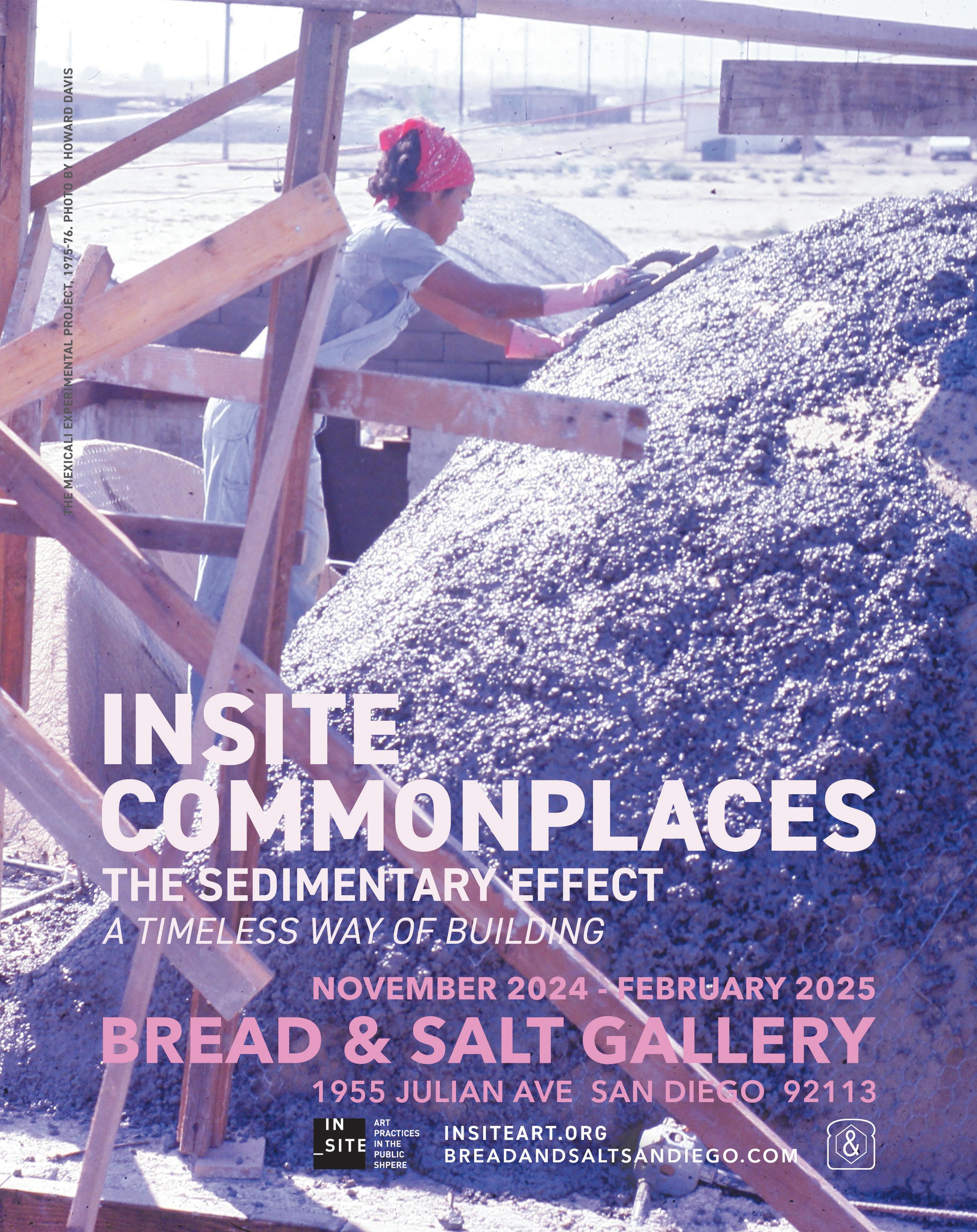






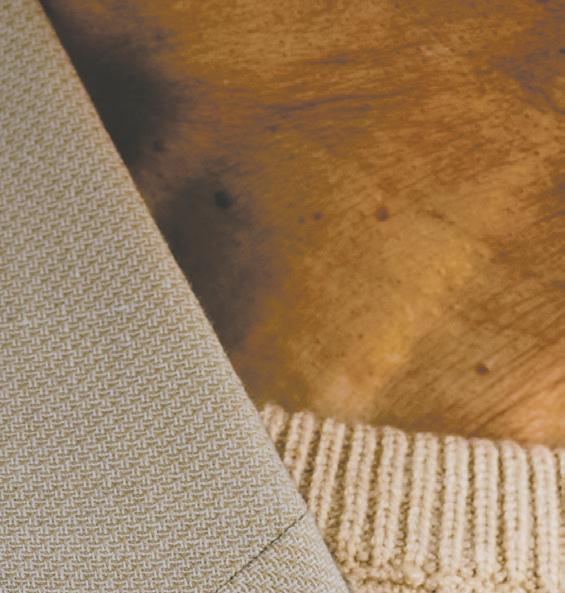

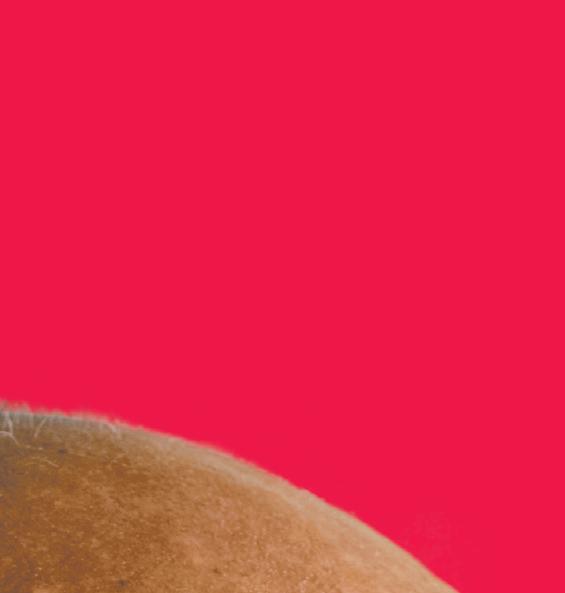


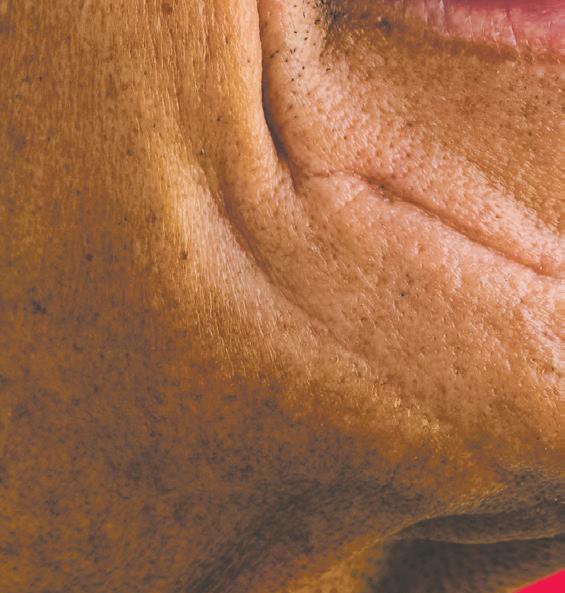


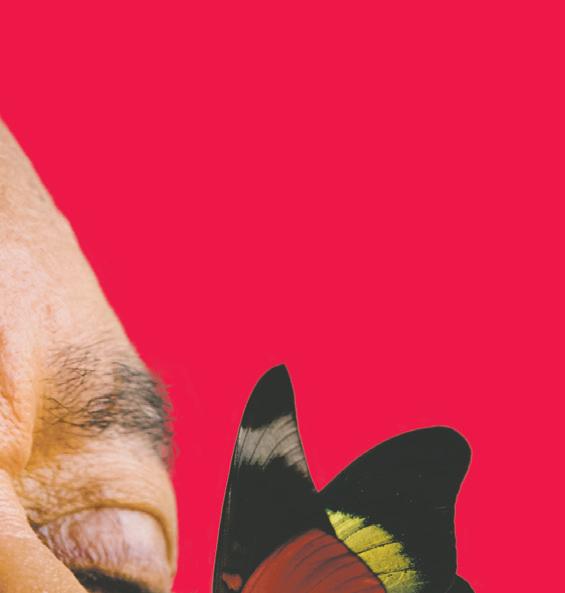
HOW QUICKLY CAN ART RELAX YOU? QUICKER THAN A COCKTAIL? CAN ART REDUCE TENSION FASTER THAN YOGA CAN? CAN ART BOOST SEROTONIN AND IMPROVE YOUR SLEEP?


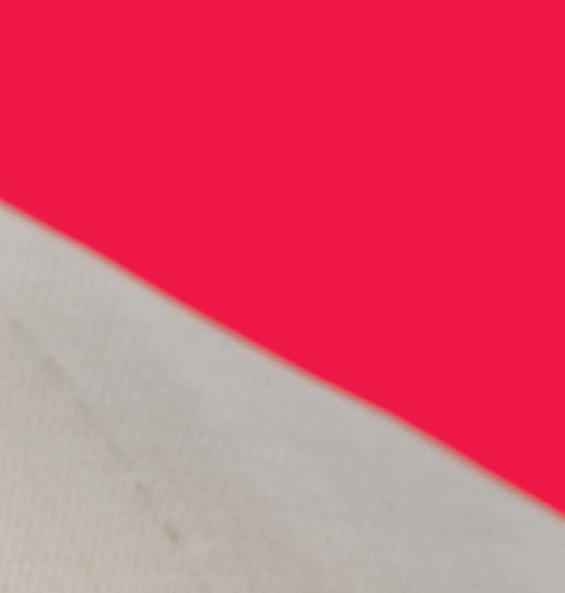

CAN IT STOP TEETH GRINDING? CAN IT RELEASE DOPAMINE AND HELP YOUR MOOD?
CAN IT INCREASE OXYTOCIN?

CAN IT FEEL LIKE LOVE?
CAN ART EASE ANXIETY?
IF ART DECREASES CORTISOL, CAN IT ENHANCE MEMORY? AND MAKE YOU A BETTER STRATEGIC THINKER? DO ART LOVERS HAVE FEWER REGRETS?
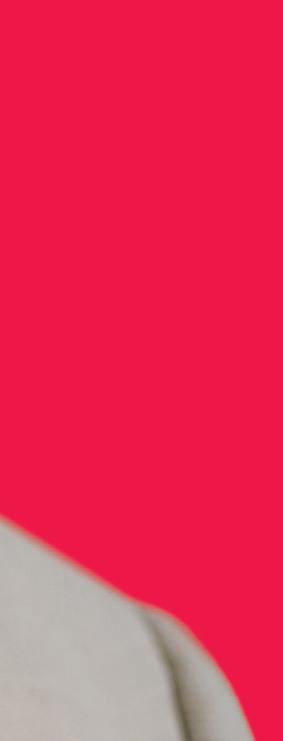
November 16, 2024 - January 11, 2025



THROUGH JAN 5, 2025


NOVEMBER 16, 2024 – JANUARY 18, 2025


– JANUARY 18,


